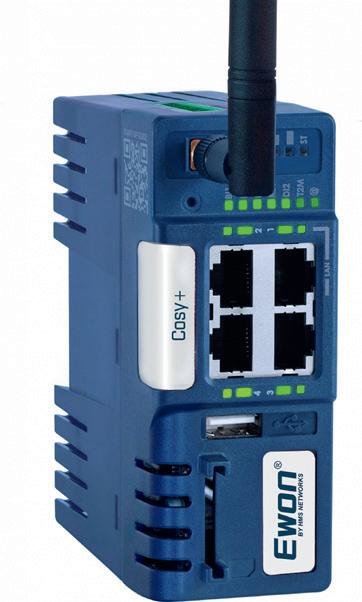
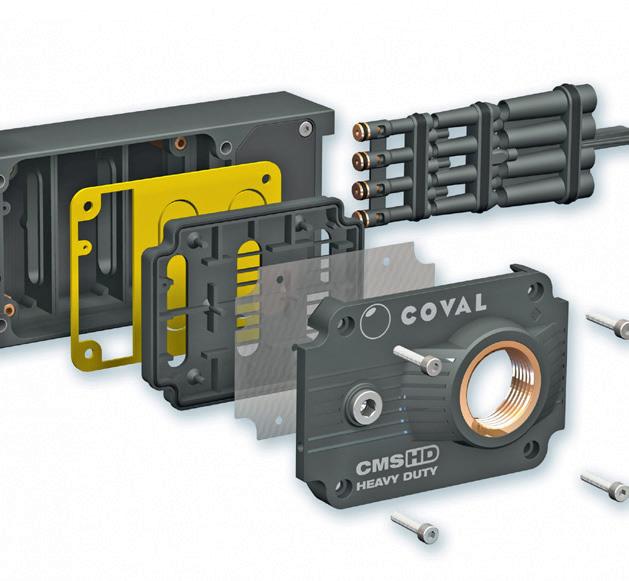
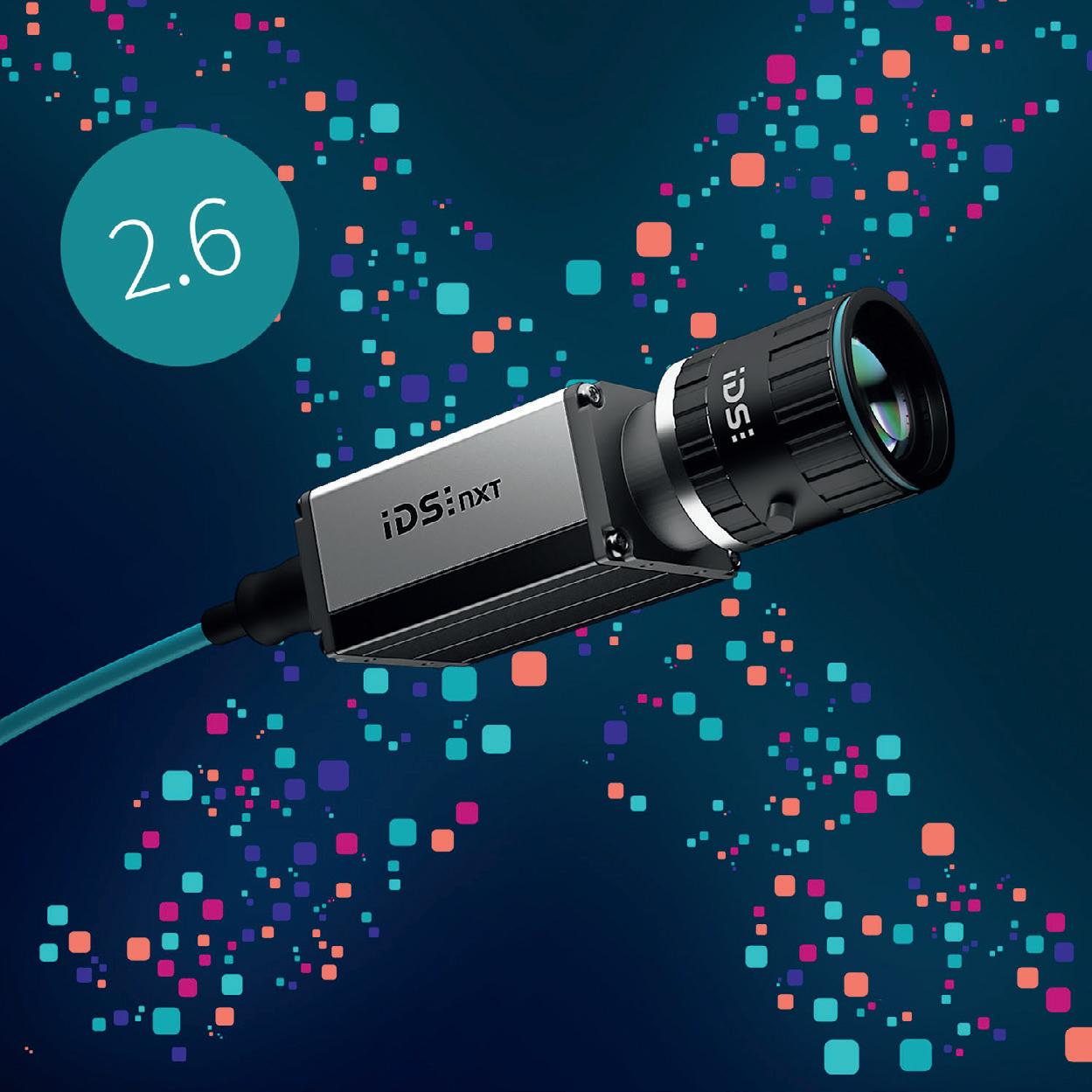
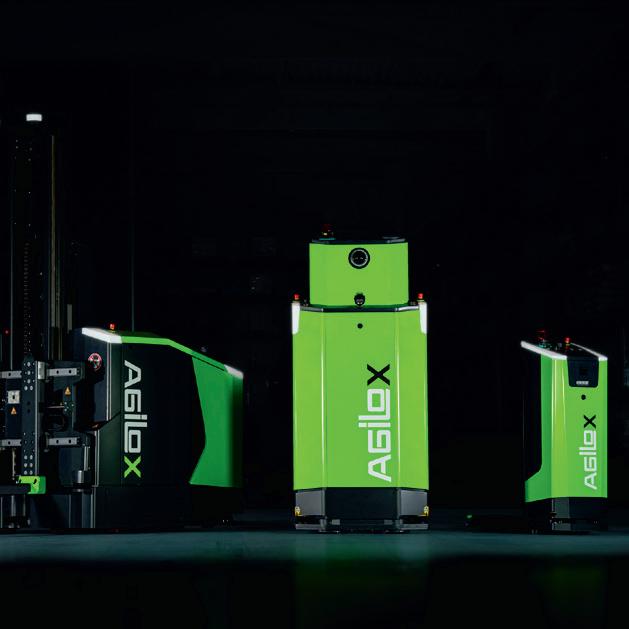
EWON COSY+ WIRELESS – THE NEW STANDARD FOR WIRELESS REMOTE ACCESS TO INDUSTRIAL MACHINES 13 COVAL ANNOUNCES ENHANCED RANGE OF MULTI-STAGE VACUUM PUMPS FOR HEAVY DUTY SUCTION APPLICATIONS 26 BLOCK-BASED EDITOR: CREATE VISION APPS WITHOUT PROGRAMMING KNOWLEDGE 58 35 | DECEMBER 2022 INDUSTRY USA INDUSTRIAL MARKET MAGAZINE AGILOX NORTH AMERICA OPENS NEW CLIENT EXPERIENCE AND FULFILLMENT CENTER 48






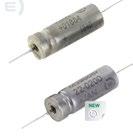






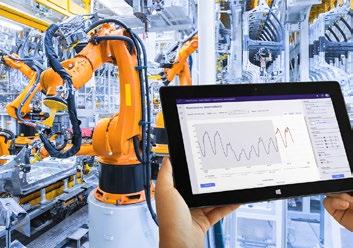

INDUSTRIAL MARKET MAGAZINE 35 | Industry USA | December 2022 HMS INDUSTRIAL NETWORKS 13 HMS INDUSTRIAL NETWORKS 14 COMPONENT EXPRESS 20 DTP 21 COVAL 26 COMAU 22 EXXELIA 31 PHOENIX ITALIA 24 FAULHABER 32 SECO TOOLS 35 GENERAL MAGNAPLATE 28 CONTA-CLIP 29 CONTA-CLIP 30 www.magazine-industry-usa.com ADVERTISERS: NEUGART 12 • MEPAX 63 MARKET OVERVIEW 4 METTLER TOLEDO 18



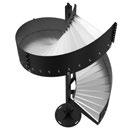




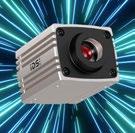
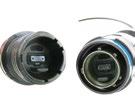




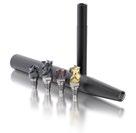
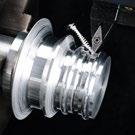
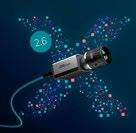
SECO TOOLS 36 ORBEX 38 WACHENDORFF 39 INTERROLL 40 HARTING 42 BELL-EVERMAN 45 ROBUSTEL 46 AGILOX 48 IDS IMAGING DEVELOPMENT SYSTEMS 50 AMPHENOL 51 EMERSON AUTOMATION SOLUTIONS 60 EMERSON AUTOMATION SOLUTIONS 52 EMERSON AUTOMATION SOLUTIONS 62 NORD 54 SECO TOOLS 56 WIDIA 57 IDS IMAGING DEVELOPMENT SYSTEMS 58 INDUPORTALS MEDIA PUBLISHING Send your press releases to: editor@ipmediaonline.com To receive the Industry USA newsletter, please subscribe online: www.magazine-industry-usa.com Industry USA is the US-language magazine for engineers, published by INDUPORTALS MEDIA PUBLISHING. It contains the latest product and company news for industrial markets. Industry USA edits its articles with the greatest of care, however we cannot guarantee the accuracy of the information presented in them. Our teams disclaim all responsibility concerning the content of this media or how it might be used. https://induportals-media-publishing.com
by Milton
Historically, right from the time of the first Industrial Revolution that originated around two centuries ago, to the present era of Industry 4.0, technology has helped improve production and raise efficiency to unprecedented levels in industry. But even today, it is estimated that poor maintenance strategies reduce a plant’s overall productive capacity by 5 to 20 percent; the resultant unplanned downtime in turn costs manufacturers an estimated US$50 billion each year. In fact, ‘ The True Cost of Downtime’, a report released by Senseye, the leading global company for automated machine health management, estimates the direct and indirect costs of unplanned downtime to major manufacturers is up to a staggering US$1 trillion! These figures underline the importance of sound maintenance practices in industry today.
Maintenance of industrial machinery and equipment traditionally falls in three categories – reactive maintenance where assets are run to failure; preventive maintenance where the emphasis is on preventing problems before they occur; and predictive maintenance which goes a step further to predict or anticipate problems and take planned remedial action that increases plant reliability. Each of these three maintenance strategies has its advantages and disadvantages. Essentially, a company may adopt different types of maintenance services based on the value of assets as well as the seriousness of the situation should a breakdown occur. Most modern manufacturing plants have long abandoned the practice of reactive maintenance in favor of preventive maintenance and are now moving towards predictive maintenance. Since predictive maintenance monitors asset condition in real time and enables corrective actions before failures disrupt production, it is generally considered to be the most advanced and intensive type of maintenance. In other words, in the manufacturing ecosystem, predictive maintenance is now increasingly adopted as a strategy for dealing with unplanned machine downtime.

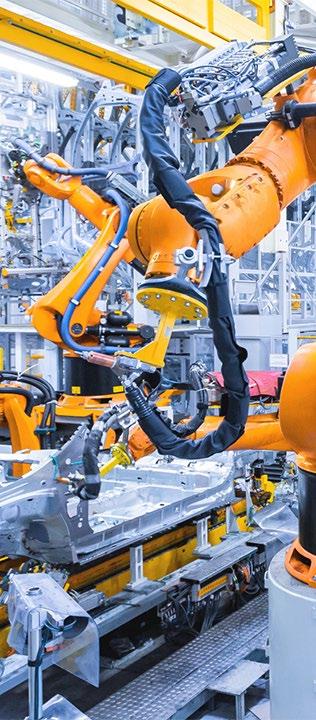
35 | Industry USA | December 2022 4
MARKET OVERVIEW English version
D’SILVA
Predictive maintenance increases manufacturing efficiency, saves on maintenance costs, and contributes to a healthy bottom line.
PREDICTIVE MAINTENANCE, ARTIFICIAL INTELLIGENCE AND FACTORY EFFICIENCY

35 | Industry USA | December 2022 5 NEWS
MARKET OVERVIEW
Siemens adopts Tangent Works’ InstantML technology to deliver AI capabilities. Photo credit: Tangent Works
MARKET OVERVIEW
Predictive maintenance
There is no clear record of the origins of Predictive Maintenance (widely referred to as PdM) in industry, but it has been prevalent in some form or other for several decades now, with automation and use of sensors facilitating what is known as condition monitoring. Some accounts mention that predictive maintenance began with condition-based maintenance, and attribute it to CH Waddington, who was a biologist assigned to the UK’s Royal Air Force during World War II. It was his observation that planned maintenance actually increased breakdown in aircraft (termed Waddington Effect) that led to the concept of PdM based on condition monitoring, which dramatically increased aircraft availability. Others believe that though PdM existed in some form or other, it was only adopted widely from the 1990s by the manufacturing industry.

What exactly is condition-based monitoring on which predictive maintenance is based? Condition-based monitoring may be defined as a strategy that makes use of sensors and other tools to continuously monitor the condition of machines and assets to determine their ‘health’ and predict their condition to decide when is the right time to intervene with maintenance, without disrupting the regular production schedule. There are various types of sensors that record a wide range of data, such as sound/noise, temperature, pressure, vibrations and even conductivity, which enables an engineer to predict the failure of an asset while allowing it to be repaired or replaced in advance, before a breakdown occurs. Predictive maintenance helps maximise the life of an asset and reduce maintenance costs and equipment downtime. As a result, it finds extensive applications in manufacturing, energy and utilities, aerospace, defense, transportation and logistics, and healthcare industries worldwide. Used effectively, predictive maintenance increases manufacturing efficiency, saves on maintenance costs, and contributes to a healthy bottom line.
The PdM market size
If one looks at the Google search result for predictive maintenance market, it shows a large number of reports with wide variations, depending on the scope and segments covered by the research agency. Some of these reports cover the entire spectrum, including utilities apart from all industry segments, which explains the variation. However, one thing is common across all these reports; the CAGR is in the range of 20-30%, which indicates a very rapid growth. For the purpose of this article, the report pertaining to the manufacturing segment makes better sense. According to a research report released by ResearchAndMarkets.com in early 2020, the global market for Predictive Maintenance for Manufacturing Industry, which was an estimated US$1.2 Bn in the year 2020, is projected to reach a revised size of US$3.9 Bn by 2026, growing at a CAGR of 21.4% over the analysis period.
This healthy growth in the PdM market is characterised by three trends:
• The intense competition in the manufacturing industry is forcing companies to exploit all avenues of increasing productivity and efficiency of their operations, and effective asset performance management is among the top priorities.
• Most companies are now in the process of digital transformation of their operations where maintenance is getting a technology led makeover with use of advanced data capturing and analytics tools that facilitates endto-end integration of PdM with the entire lifecycle of the industrial plant.
• Stringent workplace safety regulations and growing emphasis on occupational safety norms coupled growing awareness among the tech savvy workforce.
Among the leading vendors of technologies catering to PdM are global MNCs like General Electric Company, IBM Corporation, Siemens, ABB, Robert Bosch, Rockwell Automation, Schneider Electric SA, Dassault Systèmes, Software AG, Accenture plc, Cisco Systems, Hitachi, Honeywell, Microsoft, and Oracle Corporation, not necessarily in the same order.
35 | Industry USA | December 2022 6
Predictive maintenance monitors asset condition in real time.
Photo by Anton Dmitriev on Unsplash
Speaking about the Indian market, Preshit Murudkar, Managing Director & CEO, Comau India Pvt Ltd, confirms the general growth trend. The “India Predictive Maintenance Market if considered in a holistic way is a big market and is growing at a CAGR of 25%. It is expected to reach US $4 Bn by 2026, and further with the evolution of 5G technology this will disrupt, and bring in a lot of opportunities,” he says. According to him, the market by deployment modes is divided between On-premise and Cloud, and by verticals, comprises: Government and Defense; Manufacturing; Energy and Utilities; Transportation and Logistics; Healthcare and Life Sciences; and others.
Nimish Danani, Director Consulting Services, Hitachi Application Reliability Centre, has a different set of figures, in conformity with the observation made earlier about the variations. “Going by various research and reports, the global market for predictive maintenance in the next 5 years will be about $16 Bn to $18 Bn. In the last estimate I read it is growing at about 30% CAGR. The Indian market for predictive maintenance could inch up to $4 Bn in the next 4 to 5 years growing at about 25% CAGR,” he says.
Predictive Maintenance in the IIoT Era
If predictive maintenance is generally considered to be the most advanced and intensive type of maintenance, it has further reinforced this position in the age of Industrial Internet of Things (IIoT), with data analytics adding to its reliability, making it an ideal solution. While sensors were always part of predictive maintenance practices, their modern versions are highly evolved and become intelligent, and in combination with remote diagnostic tools and analytics software, make predictions even more accurate than ever before. In effect, predictive maintenance relies mainly on the data gathered by sensors and analysed to get insights that facilitate early fault detection.
With IIoT, every machine or equipment in the plant is equipped with internal sensors for constant monitoring of running status. This real-time data collection, analysis and simulation provides insights on equipment performance, based on which maintenance schedules are planned, without interrupting regular production. But how effective is data analysis in making the correct diagnoses without missing anything of critical importance? Sensors typically collect humongous amounts of data of which almost all is of routine nature. The anomalies are hidden in a fraction of

35 | Industry USA | December 2022 7
MARKET OVERVIEW
this data. So in the end it boils down to the quality of data analytics, which opens the doors for artificial intelligence (AI).
Role of Artificial Intelligence in Predictive Maintenance


Artificial intelligence has wide applications in industry in the IIoT era thanks to its ability to make sense of the mountains of data generated by various sensors and devices. In ‘The True Cost of Downtime’ report quoted at the beginning, Senseye has demonstrated how by implementing AI-driven machine-health monitoring and predictive maintenance across large industrial organisations, it is possible to reduce levels of unplanned downtime by 50% and recoup investments in this technology in less than three months. In fact, predictive maintenance has been enriched and enhanced by the use of AI-powered algorithms which sift through the datasets gleaned from equipment history and maintenance logs. In a 2019 article published in Harvard Business Review, McKinsey partners Michael Chui, Nicolaus Henke, and Mehdi Miremadi have stated that in manufacturing, the greatest value from AI can be created by using it for predictive maintenance, thanks to its ability to process massive amounts of data, including audio and video, which means it can quickly identify anomalies to prevent breakdowns, whether that be an odd sound in an aircraft engine or a malfunction on an assembly line detected by a sensor.
Dassault Systèmes offers its 3DEXPERIENCE® platform to manufacturers which contains a suite of collaborative digital solutions to boost workforce optimisation. The company believes manufacturers have only begun to capitalise on artificial intelligence (AI) and machine learning (ML) capabilities on the factory floor today, for driving overall equipment effectiveness (OEE), optimising processes and creating a pivotal role in predictive maintenance. “AI is required for effective predictive maintenance. With it, manufacturers can evaluate multiple inputs like usage, vibration and noise directly from the machine, compare that to historical events and forecast when a machine failure is likely to occur. It then schedules the appropriate maintenance activities at the last reasonable moment before the expected failure,” states Mike Bradford, DELMIA Strategic Business Development, Dassault Systèmes.
35 | Industry USA | December 2022 8
MARKET OVERVIEW
ABB’s innovative hybrid approach provides them with the basis to predict future conditions. Photo credit: ABB
Global technology giant ABB, which uses its Ability platform for Predictive Maintenance of assets ranging from turbines to compressors and diesel driven generators to motors, is also using AI in what the company calls a hybrid approach that combines domain knowledge with machine learning algorithms. According to ABB, merely collecting data to detect anomalies is not enough because forecasting maintenance is not straight-forward. To effectively schedule maintenance, it is necessary to predict how a detected abnormal condition is likely to develop in the future. The innovative hybrid approach follows a three-pronged process:
• Condition monitoring that can provide early detection of faults

• Identification of specific failure mode(s) related to the fault detection, and
• Quantification of the extent of fault development to support maintenance planning.
Other technology companies are also riding the AI bandwagon when it comes to predictive maintenance. In January 2022, Siemens MindSphere® unveiled its first artificial intelligence application for industrial IoT called ‘AI for Everyone’, developed using the TIM InstantML technology from Tangent Works, a Belgian company. TIM, or Tangent Information Modeler, is an automatic predictive model building engine that automates the forecasting and anomaly detection process by analysing time series data and generating accurate models based on the patterns it detects. The aim of this new application is to reduce the technological barrier to powerful machine learning and AI tools. This no-code approach will allow people across manufacturing organisations to make informed decisions on future actions. “Thanks to the integration of Tangent Works’ InstantML technology, Siemens customers and partners can now better turn data into real and actionable insights and value. With the ability to use AI/ML to generate hyper-automated predictive analytics, even citizen data scientists can leverage data and achieve immediate insights, at scale. This ultimately reduces complexity and puts the power of IoT data in the hands of the user,” stated Raymond Kok, Senior Vice President of Cloud Application Solutions @ Siemens.
Schneider Electric, the global leader in the digital transformation of energy management and automation, has also demonstrated the use of AI-powered services through its EcoStruxure platform. It has documented a use case of the Nestlé Al Maha factory in Dubai of how the EcoStruxure technology evaluates data in real time from the plant’s electrical equipment and uses cloud-based predictive analytics to identify and resolve potential faults. With its open, scalable architecture, the EcoStruxure platform connects to smart devices across the electrical system and integrates with process control systems and enterprise data platforms. Data is analysed by cloud-based algorithms, and the solutions provide insights into equipment health and suggest predictive maintenance schedules, allowing for a proactive approach to asset management.
Comau, the Italian company, offers In.Grid, an innovative networking platform that combines digital and physical
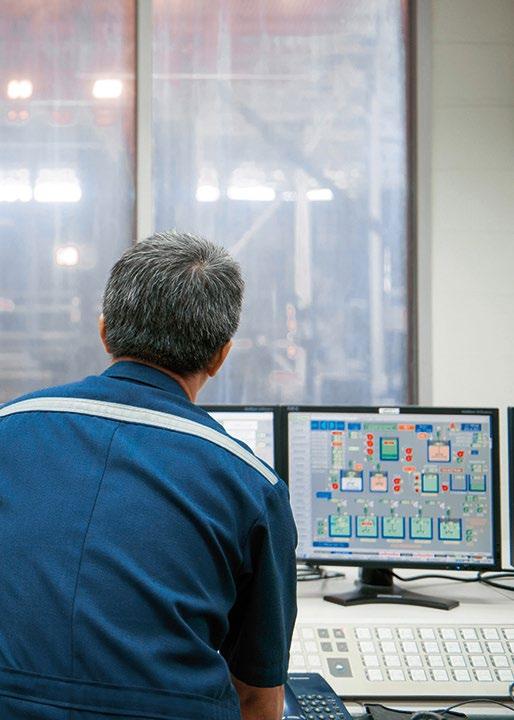
35 | Industry USA | December 2022 9 NEWS
MARKET OVERVIEW
The Nestlé Al Maha factory in Dubai uses technology from Schneider Electric for predictive maintenance. Photo credit: Schneider Electric
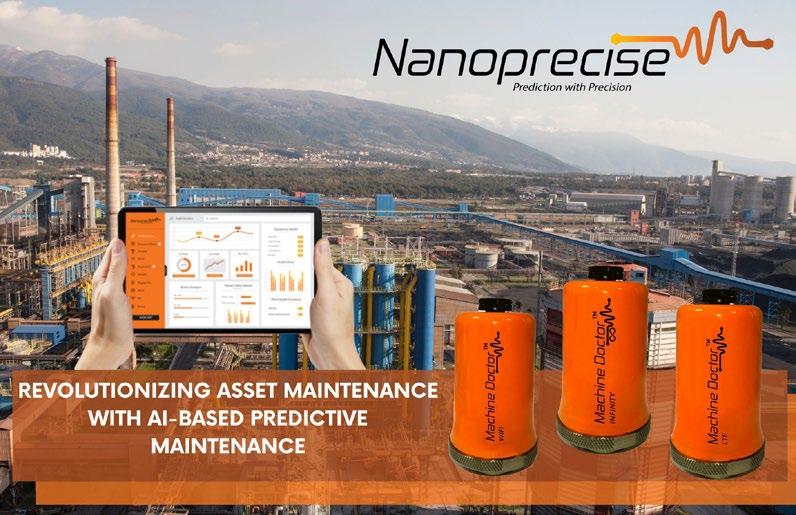
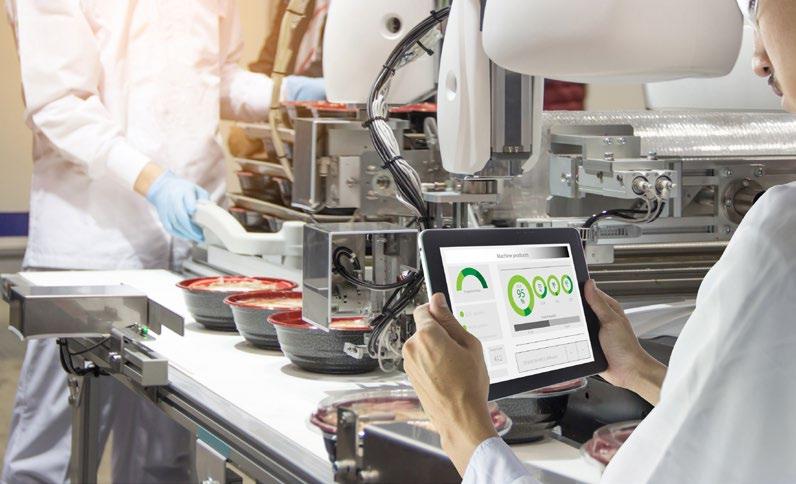
35 | Industry USA | December 2022 10
Optimising asset utilisation with Predictive Asset Maintenance. Photo credit: Rockwell Automation
MARKET
Automated, sensor-based predictive maintenance solution from Nanoprecise. Photo credit: Nanoprecise Sci Corp
OVERVIEW
worlds through sensorisation, data analysis and realtime monitoring of equipment, systems and production lines. The data collection, processing and connectivity is done at a machine level, line level or plant level, while the data analysis platform with its high-level algorithms, AI capabilities and storage features can be hosted at the plant itself, at an external data center or on a private cloud. “Our In.Grid platform is aligned with market needs from IIoT or Industry 4.0 point of view from both critical aspects. For End Product Traceability, the In.Grid MES solution is one of the flexible solutions using the latest technology of docker & microservices not only scalable but also portable, upgradable. This includes features starting from flexible User Management, Product Configuration, Flexible Connectivity with any device, Production Planning, Quality Data Traceability, Alarm Management, Cycle Time Analysis, OEE and ANDON,” says Murudkar. In its other role for Maintenance of Plant and Machinery, the In.Grid platform is easily configurable for monitoring and predicting health of the machines which are critical to avoid unplanned breakdown. “Features like Digital A/PM (similar to G-Calendar), Predictive Analysis with CBM Alarms (auto learning configurable and customisable algorithms), Machine Alarm Analysis, real time monitoring of health and alarms, make it ideal to leverage the power of Industry 4.0 in a cost-effective and highly efficient manner,” he adds.
So whether it is GE and its various predictive maintenance technology platforms for different sectors, or Rockwell Automation’s Predictive Maintenance as a Service offering that leverages FactoryTalk Analytics and apply machine learning technology, a variety of companies offer solutions in the predictive maintenance space. “From established large players to start-ups who have specific products, solutions, platforms for helping companies implement predictive maintenance solutions, thereby reducing downtime, improving yield, profitability and uptime for suppliers,” says Nimish Danani.
While established companies are all well entrenched in this space, there are the proverbial new kids on the block – the start-ups – that are now creating a niche with their boutique offerings of hardware and software solutions, or a combination of both. One such company is Infinite Uptime, which began product development in 2017 and entered the market with a solution in 2020. “As markets matured to the Industry 4.0 reality, more and more manufacturing industries realised the potential impact of predictive analytics and IIoT in their manufacturing operations. We had to quickly scale our teams to meet the global demand and maximise our reach and serviceability for our customers,” says Dr Raunak Bhinge, Founder and CEO – Infinite Uptime. The company has since added 190+ manufacturing clients across 14 industry segments across the world, as their Digital Transformation and Reliability Services partner. To date, it claims to have digitised more than 750 plants, saving 6300+ hours of downtime which has resulted in more than USD 20 Mn being saved by the businesses.
Nanoprecise Sci Corp is another start-up that specialises in the delivery of comprehensive, cloud-based solutions for the lifecycle monitoring of equipment, using IoT, AI and Data science applications. This automated predictive maintenance solution provider offers an integrated AI-based
solution that consists of a unique 6-in-1 IIoT sensor and an AI-based automated analytics platform. The wireless IIoT sensor measures Vibration, Acoustics, RPM, Temperature, Humidity and Magnetic Flux. The analytics platform utilises advanced signal processing algorithms to analyse the 6 streams of data in real time for predicting the remaining time to failure. The company was recently awarded first place in the Mobility and Automobile Innovation Lab (MAIL) programme by Maruti Suzuki India Limited (MSIL), India’s largest automobile manufacturer. The programme offers tech start-ups with digital innovations an opportunity to do a Proof-of-Concept project with Maruti Suzuki India Limited. “It can be very difficult to monitor the condition of various machines, especially when it involves cyclic-operations. With our AI-based solution, automobile manufacturers can rely on an automated system to monitor the health & performance of machines and equipment sets in near real-time. It offers the capability to detect minor changes in their operational parameters, monitor progression, and provide insights before they impact production or cause downtime,” stated Prashant Verma, Co-founder & Product Head, Nanoprecise Sci Corp.
Future trends
With so much at stake, predictive maintenance, which has made rapid strides in recent years aided by emerging technologies, would be an essential component of maintenance strategies for most companies. Speaking about the most prominent emerging trends, Nimish Danani is of the view that with adoption of predictive maintenance, there is a lot of data being collected, analysed and AI applied to build models to start predicting failures and forecast more accurate maintenance updates.
“Based on our experience and exposure within the Automation industry the following features are the most sought after,” says Preshit Murudkar, listing them as:
• Data Traceability
• Predictive Analysis & Maintenance
• Remote Analysis & Maintenance
• Customised reports and charts, and
• OEE & ANDON.
Going forward, the sector will see increased investment in predictive data analytics based on AI and ML to minimise downtime and maintenance costs. While adoption of IoT is also a given, digital twins and AR/VR/XR are other emerging technologies that will feature prominently in predictive maintenance. Finally, more vendors would offer ‘Predictive Maintenance as a Service’ like Rockwell Automation, to make it easier for the user industries to benefit from a single source solution.
35 | Industry USA | December 2022 11 NEWS
MARKET OVERVIEW
POWERFUL SOLUTIONS FOR RACK AND PINION DRIVES.
Planetary gearboxes with mounted pinion
A gearbox/pinion combination developed from a single source is the guarantee of ideal technical coordination for your rack and pinion drive.
Planetary gearboxes with a mounted pinion are available in many different combinations. The pinions, which are manufactured in-house, will fulfill your requirements with regard to dynamics, feed force and positioning accuracy with their precision gearing. This is how we ensure that the ideal solution is available for different applications.
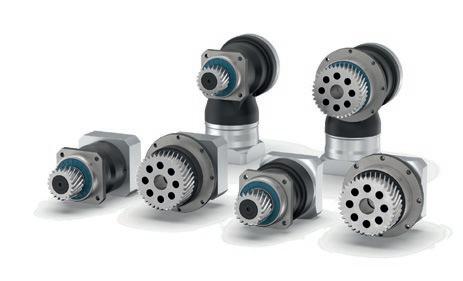
CONTACT: Neugart USA Corp. | 14325 South Lakes Drive | Charlotte, NC28273 | USA | Phone: +1 980 299-9800 | Email: sales@neugartusa.com | www.neugart.com/en-us
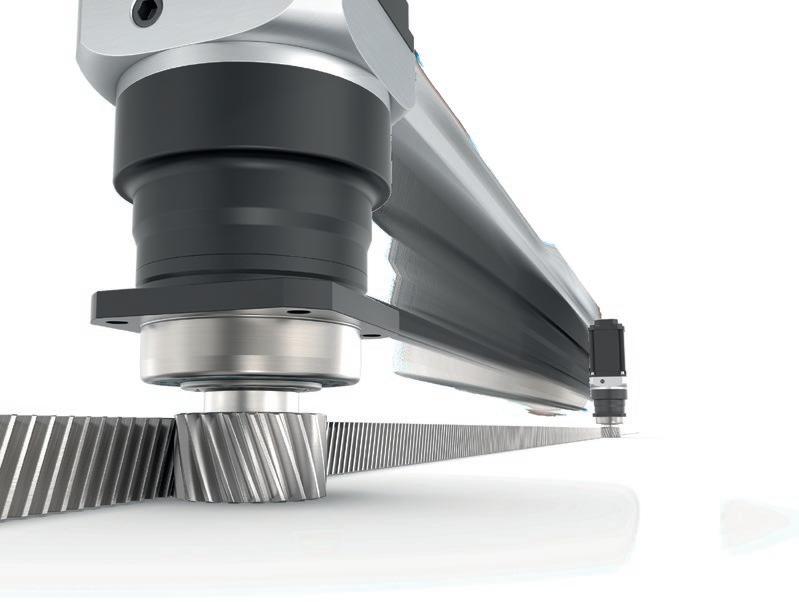
FIND OUT MORE NOW AT: WWW.NEUGART.COM/EN-US
EWON COSY+ WIRELESS – THE NEW STANDARD FOR WIRELESS REMOTE ACCESS TO INDUSTRIAL MACHINES
With the new Cosy+ Wireless, HMS Networks finalizes the release of the new generation of Ewon® industrial remote access gateways, bringing IIoT connectivity and cybersecurity to the next level.
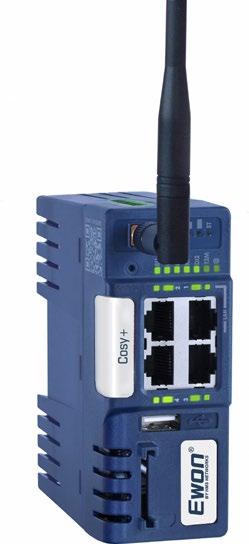
Featuring built-in hardware security, the Cosy+ range allows users to access PLC-based machines securely from anywhere, and do commissioning, troubleshooting and programming online. With the new Cosy+ Wireless version, users can connect to their machines via Ethernet, Wi-Fi or cellular link depending on the industrial situation, enabling effective and sustainable support of machines by using secure remote access. The remote access to Ewon Cosy+ gateways is done over Talk2M® – the world’s largest 3rd party industrial cloud service, with more than 400,000 Ewon gateways connected.
Time for Cosy+ Wireless
Following the launch of the Cosy+ Ethernet version last year, the Cosy+ Wireless addresses the increased demand for secure wireless access to machines. The demand is driven by the need to increase productivity as well as maintain secure and sustainable operations.
“The current international geo-political situation highlights the need to access machines remotely in a secure, sustainable way, minimizing the need for on-site traveling by service teams. By releasing the Cosy+ Wireless, the most secure Ewon gateway to date, Ewon is taking industrial remote access to a new level”, says Sébastien Thinnes, Head of Products and Marketing at HMS Networks’ Business Unit Ewon.
Security in focus for Ewon
Developed and managed according to ISO27001, the Cosy+ wireless range includes several layers of security and comprises unique built-in hardware security features. Thanks to an exclusive partnership with cybersecurity expert firm Nviso, Ewon offers a remote solution that is proven, scalable and tested according to the highest standards in order to meet the needs of today and tomorrow. On the market for more than 20 years and today a market leader in remote industrial connectivity, Ewon by HMS Networks is known for providing industrial remote access solutions to the global market that are easy to use, cost effective and highly secure.
https://www.hms-networks.com/


35 | Industry USA | December 2022 13 MORE INFORMATION INFORMATION TECHNOLOGY
COMMUNICATION & SAFETY CHALLENGES
FACING MOBILE ROBOTS MANUFACTURERS
Mobile robots are everywhere, from warehouses to hospitals and even on the street. Their popularity is easy to understand; they’re cheaper, safer, easier to find, and more productive than actual workers. They’re easy to scale or combine with other machines. As mobile robots collect a lot of real-time data, companies can use mobile robots to start their IIoT journey.
But to work efficiently, mobile robots need safe and reliable communication. This article outlines the main communication and safety challenges facing mobile robot manufacturers and provides an easy way to overcome these challenges to keep mobile robots moving.
What are Mobile Robots?
Before we begin, let’s define what we mean by mobile robots.
Mobile robots transport materials from one location to another and come in two types, automated guided vehicles (AGVs) and autonomous mobile robots (AMRs). AGVs use guiding infrastructure (wires reflectors, reflectors, or magnetic strips) to follow predetermined routes. If an object blocks an AGV’s path, the AGV stops and waits until the object is removed.
AMRs are more dynamic. They navigate via maps and use data from cameras, built-in sensors, or laser scanners to detect their surroundings and choose the most efficient route. If an object blocks an AMR’s planned route, it selects another route. As AMRs are not reliant on guiding infrastructure, they’re quicker to install and can adapt to logistical changes.

What are the Communication and Safety Challenges Facing Mobile Robot Manufacturers?
1. Establish a Wireless Connection
The first challenge for mobile robot manufacturers is to select the most suitable wireless technology. The usual advice is to establish the requirements, evaluate the standards, and choose the best match. Unfortunately, this isn’t always possible for mobile robot manufacturers as often they don’t know where the machine will be located or the exact details of the target application.
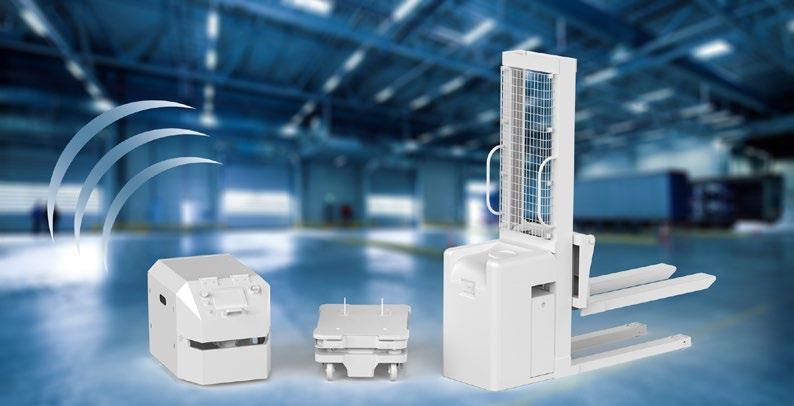
Sometimes a Bluetooth connection will be ideal as it offers a stable non-congested connection, while other applications

35 | Industry USA | December 2022 14 MORE INFORMATION INFORMATION TECHNOLOGY
will require a high-speed, secure cellular connection. What would be useful for mobile robot manufacturers is to have a networking technology that’s easy to change to meet specific requirements.
The second challenge is to ensure that the installation works as planned. Before installing a wireless solution, complete a predictive site survey based on facility drawings to ensure the mobile robots have sufficient signal coverage throughout the location. The site survey should identify the optimal location for the Access Points, the correct antenna type, the optimal antenna angle, and how to mitigate interference. After the installation, use wireless sniffer tools to check the design and adjust APs or antenna as required.
2. Connecting Mobile Robots to Industrial Networks
Mobile robots need to communicate with controllers at the relevant site even though the mobile robots and controllers are often using different industrial protocols. For example, an AGV might use CANopen while the controller might use PROFINET. Furthermore, mobile robot manufacturers may want to use the same AGV model on a different site where the controller uses another industrial network, such as EtherCAT.
Mobile robot manufacturers also need to ensure that their mobile robots have sufficient capacity to process the required amount of data. The required amount of data will vary depending on the size and type of installation. Large installations may use more data as the routing algorithms need to cover a larger area, more vehicles, and more potential routes. Navigation systems such as vision navigation process images and therefore require more processing power than installations using other navigation systems such as reflectors. As a result, mobile robot manufacturers must solve the following challenges:
• They need a networking technology that supports all major fieldbus and industrial Ethernet networks.

• It needs to be easy to change the networking technology to enable the mobile robot to communicate on the same industrial network as the controller without changing the hardware design.

• They need to ensure that the networking technology has sufficient capacity and functionality to process the required data.
3. Creating a Safe System
Creating a system where mobile robots can safely transport material is a critical but challenging task. Mobile robot manufacturers need to create a system that considers all the diverse types of mobile robots, structures, and people in the environment. They need to ensure that the mobile robots react to outside actions, such as someone opening a safety door or pushing an emergency stop button, and that the networking solution can process different safety protocols and interfaces. They need to consider that AMRs move freely and manage the risk of collisions accordingly. The technology used in sensors is constantly evolving, and mobile robot manufacturers need to follow the developments to ensure their products remain as efficient as possible.
Safety Standards
The safety standards provide guidelines on implementing safety-related components, preparing the environment, and maintaining machines or equipment.
While compliance with the different safety standards (ISO, DIN, IEC, ANSI, etc.) is mostly voluntary, machine builders in the European Union are legally required to follow the safety standards in the machinery directives. Machinery directive 2006/42/EC is always applicable for mobile robot manufacturers, and in some applications, directive 2014/30/EU might also be relevant as it regulates the electromagnetic compatibility of equipment. Machinery directive 2006/42/EC describes the requirements for the design and construction of safe machines introduced into the European market. Manufacturers can only affix a CE label and deliver the machine to their customers if they can prove in the declaration of conformity that they have fulfilled the directive’s requirements.
Although the other safety standards are not mandatory, manufacturers should still follow them as they help to fulfill the requirements in machinery directive 2006/42/ EC. For example, manufacturers can follow the guidance in ISO 12100 to reduce identified risks to an acceptable residual
35 | Industry USA | December 2022 15 MORE INFORMATION
Wireless standard -high-level advantages and disadvantages.
risk. They can use ISO 13849 or IEC 62061 to find the required safety level for each risk and ensure that the corresponding safety-related function meets the defined requirements. Mobile robot manufacturers decide how they achieve a certain safety level. For example, they can decrease the speed of the mobile robot to lower the risk of collisions and severity of injuries to an acceptable level. Or they can ensure that mobile robots only operate in separated zones where human access is prohibited (defined as confined zones in ISO 3691-4).
Identifying the correct standards and implementing the requirements is the best way mobile manufacturers can create a safe system. But as this summary suggests, it’s a complicated and time-consuming process.
4. Ensuring a Reliable CAN Communication

A reliable and easy-to-implement standard since the 1980s, communication-based on CAN technology is still growing in popularity, mainly due to its use in various booming industries, such as E-Mobility and Battery Energy Storage Systems (BESS). CAN is simple, energy and cost-efficient. All the devices on the network can access all the information, and it’s an open standard, meaning that users can adapt and extend the messages to meet their needs.
For mobile robot manufacturers, establishing a CAN connection is becoming even more vital as it enables them to monitor the lithium-ion batteries increasingly used in mobile robot drive systems, either in retrofit systems or in new installations. Mobile robot manufacturers need to do the following:
1 - Establish a reliable connection to the CAN or CANopen communication standards to enable them to check their devices, such as monitoring the battery’s status and performance.
2 - Protect systems from electromagnetic interference (EMI), as EMI can destroy a system’s electronics. The risk of EMI is significant in retrofits as adding new components, such as batteries next to the communication cable, results in

5.
the introduction of high-frequency electromagnetic disturbances.
Accessing Mobile Robots Remotely
The ability to remotely access a machine’s control system can enable mobile robot vendors or engineers to troubleshoot and resolve most problems without traveling to the site.

The challenge is to create a remote access solution that balances the needs of the IT department with the needs of the engineer or vendor.
The IT department wants to ensure that the network remains secure, reliable, and retains integrity. As a result, the remote access solution should include the following security measures:
• Use outbound connections rather than inbound connections to keep the impact on the firewall to a minimum.
• Separate the relevant traffic from the rest of the network.
• Encrypt and protect all traffic to ensure its confidentiality and integrity.
• Ensure that vendors work in line with or are certified to relevant security standards such as ISO 27001
• Ensure that suppliers complete regular security audits.
The engineer or vendor wants an easy-to-use and dependable system. It should be easy for users to connect to the mobile robots and access the required information. If the installation might change, it should be easy to scale the number of robots as required. If the mobile robots are in a different country from the vendors or engineers, the networking infrastructure must have sufficient coverage and redundancy to guarantee availability worldwide.
35 | Industry USA | December 2022 16 MORE INFORMATION
Overview of Safety Challenges for Mobile Robot Manufacturers.
Benefits of Remote Access.

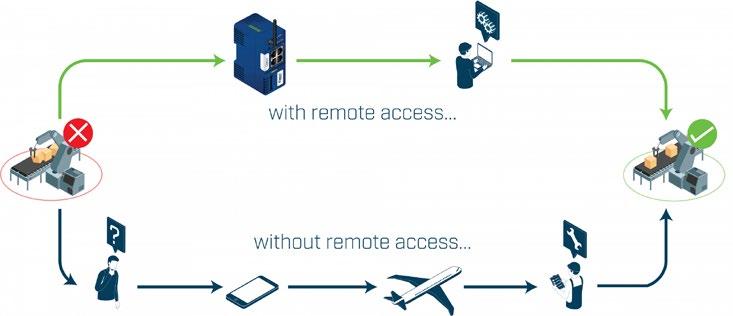

Conclusion
As we’ve seen, mobile robot manufacturers must solve many communication and safety challenges. They must establish a wireless connection, send data over different networks, ensure safety, connect to CAN systems, and securely access the robots remotely. And to make it more complicated, each installation must be re-assessed and adapted to meet the on-site requirements.
Best practice to implement mobile robot communication
Mobile robot manufacturers are rarely communication or safety experts. Subsequently, they can find it timeconsuming and expensive to try and develop the required communication technology in-house. Enlisting purposebuilt third-party communication solutions not only solves the communication challenges at hand, it also provides other benefits.
Modern communication solutions have a modular design enabling mobile robot manufacturers to remove one networking product designed for one standard or protocol and replace it with a product designed for a different standard or protocol without impacting any other part of the machine. For example, Bluetooth may be the most suitable wireless standard in one installation, while Wi-Fi may provide better coverage in another installation. Similarly, one site may use the PROFINET and PROFIsafe protocols,
while another may use different industrial and safety protocols. In both scenarios, mobile robot manufacturers can use communication products to change the networking technology to meet the local requirements without making any changes to the hardware design.
https://www.hms-networks.com/
35 | Industry USA | December 2022 17 MORE INFORMATION
Authors: Mark Crossley, Daniel Heinzler, Fredrik Brynolf, Thomas Carlsson
PRECISE RESULTS: NEW ANALYTICAL INSTRUMENT UNITES 3 MEASURING TASKS IN 1 INSTRUMENT
The PathDetect™ function of the compact Easy VIS spectrophotometer produced by METTLER TOLEDO recognizes which path length is measured and reduces errors.
Ease of use in a new dimension: Closing the lid of the Easy VIS spectrophotometer produced by METTLER TOLEDO automatically starts the measurement.
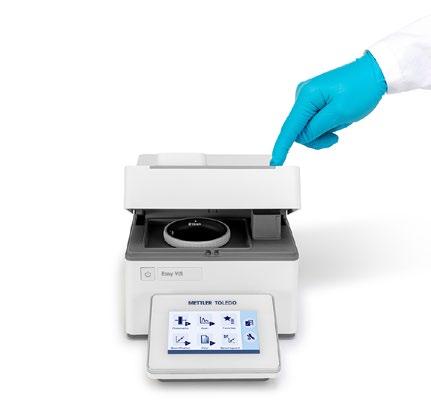
The new instrument analyzes liquid, translucent samples for their optical spectrum, color, and water parameters. Or any of the three. Operators speed up their processes and improve the quality of the results using Easy VIS by Mettler Toledo. They, therefore, save money, time, and space.

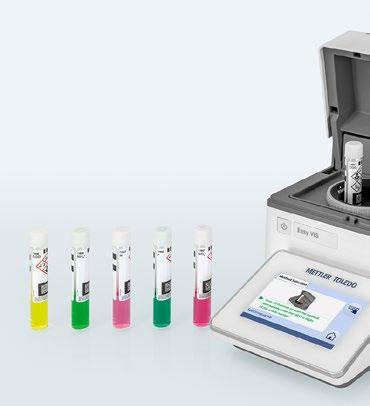
The instrument takes over the measuring tasks of up to three instruments: a colorimeter, a spectrophotometer, and special measuring methods for water testing, such as titration. All this power rests in one instrument about the size of a notebook. The results appear on screen in trustworthy accuracy, precision, and repeatability – within seconds. That saves money, time, and space. The instrument’s name is Easy VIS, one of the nextgeneration EasyPlus UV/VIS spectrophotometers produced by METTLER TOLEDO.
Manufacturers benefit in many ways
A typical place for Easy VIS is the QC lab at small manufacturers in the food and beverage industry, environmental testing labs, or any industry needing quality control and supervising their process- or wastewaters. The Easy VIS is used during multiple steps of the production process: For inspection of raw materials, quality control of semi-finished and finished products, or testing the water quality of wastewater. This streamlines the production processes considerably. Those who used to send their samples to an external laboratory profit even more, as they can now analyze most samples independently at an internal cost.
The visual user interface with workflow guidance allows you to simply scan and measure. Even untrained staff can operate Easy VIS intuitively. This increases the integrity and repeatability of the analysis and saves training time.
Easy VIS operates within a wavelength range of 330 to 1,000 nm. The light source is an easy-to-replace tungsten lamp, which any operator can replace within no time.

35 | Industry USA | December 2022 18 MORE INFORMATION MEASUREMENT
The partner device, Easy UV, covers the full UV/Vis spectrum with a wavelength range from 190 to 1,000 nm to cover additional applications in the UV range. Plus: The Easy UV runs with a power-saving and maintenance-free xenonflash lamp.
Analytic precision in three fields of expertise 25 standard-compliant color scales in the visible range come pre-installed and can easily be used. Some examples are ICUMSA™ for sugar color, ESBC for beer quality analysis, or OIV CIELab for wine color determination. The results reveal the quality of the product within seconds.
Water analysis shows, for example, the concentration of Aluminum, Ozone, Chlorine, or Polyphenol. This reveals whether the water is fit for human consumption or can be used in further production. Is the wastewater safe to release? With its numerous built-in water testing methods, the spectrophotometer can quickly provide the answer.
For spectrophotometry, the sample is analyzed at the wavelengths where the sample has its characteristic absorption of light. The Easy VIS measures the transmitted or absorbed light and the reading reveals the sample’s concentration or purity.

A typical analysis with the Easy VIS

The testing procedure is very simple: One cuvette holds the blank measurement, and another is prepared with the sample. After choosing the desired analysis method, the cuvette is placed in the cuvette holder. The PathDetect™ function recognizes which path length is measured. Closing the lid automatically starts the blank measurement. (By the
way, the blank measurement is stored for seven days. So, this step can be neglected during the rest of the week unless the measurement parameters change). After determining the blank, the sample cuvette is brought into the measuring position. The measurement starts again automatically after closing the lid. Within seconds, the results show up on the screen. Now Easy VIS is free to analyze other samples or to start a different analysis method. With the EasyDirect™ software, these results may be automatically saved or exported to an external storage device or exchanged with a data management system (e.g., LIMS).
Conclusion
Easy VIS has the potential to replace up to three other instruments, performing color measurement, water analysis, and spectrophotometry. It does so with trusted accuracy and precision – within several steps of the production process. All this saves money, time, and space. Check with your local METTLER TOLEDO representative about how unique the price performance is!
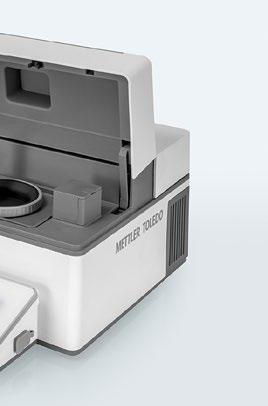
Good to know
METTLER TOLEDO’s new EasyPlus instrument line embraces the Easy VIS and Easy UV spectrophotometer. Both instruments offer equal benefits to their operators in accuracy, speed, and compactness. They differ in two aspects: wavelength range and light source. The Easy UV is of special interest to those working within the UV range from 190 to 1,000 nm. Its xenon-flash lamp is maintenancefree and requires no changing.
https://www.mt.com/gb/en/home.html
35 | Industry USA | December 2022 19 MORE INFORMATION
The compact Easy VIS by METTLER TOLEDO efficiently analyzes fluid and translucent samples. As a true all-rounder, it covers three measuring tasks in one instrument.
COMPONENTS EXPRESS INTRODUCES INDEX MOUNT™ ADJUSTABLE CAMERA MOUNTS
Component Express is pleased to announce its new Index Mount™ adjustable camera mounts. Two different models are available—the Index and the Index Max. Both mounts feature a full 360 degrees of rotational freedom, with the Index and Index Max supporting 90- and 180-degree tilting, respectively.
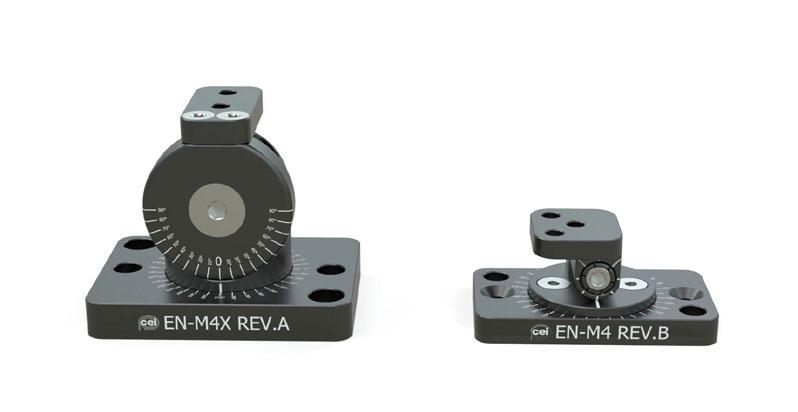
These lightweight, low-profile camera mounts feature highly visible index marks around the swivel that streamline the setup process and enable repeatable camera positioning. Type 2 anodized aluminum bodies and strong tilt locks make these mounts suitable for rugged environments. In addition to their patent-pending design, the Index and Index Max include industry-standard mounting plates and are compatible with a broad range of automation components, not just machine vision cameras but also sensors, cables, lights and CEI’s IP67-rated enclosures.
Additional features include:
• Index (EN-M4) - 3.45 by 1.95-inch (88 by 50 millimeter) footprint - Collet-style tilt lock

• Index Max (EN-M4X) - 3.75 by 2.75-inch (95 by 70 millimeter) footprint - Taper-style tilt lock
Index Adjustable Camera Mounts are an effective solution for any machine vision application and are available at an attractive price point.
https://www.componentsexpress.com/

35 | Industry USA | December 2022 20 MORE INFORMATION INDUSTRIAL SUPPLIES
FUNDAMENTAL THERMOELECTRIC TECHNOLOGY PATENT GRANTED TO DTP THERMOELECTRICS

First-of-its-kind system enables a new class of solid-state thermal management systems that is currently only possible with bulkier, mechanical alternatives.
DTP Thermoelectrics has been awarded a patent that opens the door for solid-state deep cooling thermal management. The patent is based on theoretical and analytical models that have been validated through the fabrication and characterization of thermoelectric devices that use Distributed Transport Properties (DTP) thermoelectric materials.

Sample tests, using standard protocols, demonstrate significant increases in maximum cooling temperature, efficiency (COP) and cooling power, confirming that DTP devices can cool to lower temperatures, improving performance and functionality. Until now, these capabilities were only possible using much larger and heavier mechanical cooling systems.
“There is no better performing thermoelectric material system than what we have fabricated with our DTP technology,” says Dr. Lon E. Bell, President and CEO. “This mass-producible, proprietary technology increases cooling capacity at efficiencies greater than what is possible with other thermoelectric devices. DTP technology has the potential to improve cooling and thermal management system performance and cost effectiveness in Lidar, infrared sensors, electronics, cold chain storage, medical devices, battery thermal management and vision systems.”
“Our technology has been partially enabled by recent advances in semiconductor material manufacturing,” says Dr. Douglas Crane, Chief Technology Officer. “Using both modifications to available thermoelectric materials and advanced manufacturing technology, we can generate precise performance outputs. By starting with our higher efficiency thermoelectric systems and controlling the relationship between power density and COP that DTP technology enables, we can tailor performance to specific applications.”
The patent for “Thermoelectric Systems Employing Distributed Transport Properties to Increase Cooling and Heating Performance” (number 11,421,919 by the United States Patent and Trademark Office) covers DTP technology and its ability to increase cooling and heating performance in solid-state heat pumps. Details of the patent are found here
https://dtpthermoelectrics.com
35 | Industry USA | December 2022 21 MORE INFORMATION THERMOMANAGEMENT
COMAU’S ROBOTICS AND ADVANCED TECHNOLOGIES FOR THE “E.DO LEARNING CENTER”, THE EDUCATIONAL PROJECT

LAUNCHED BY FERRARI TO SUPPORT NEW GENERATIONS OF STUDENTS IN THE LOCAL COMMUNITY
The initiative, which highlights the increasing importance of bringing robotics from the factory to an increasing number of new sectors, provides students with a unique learning environment that is both fun and engaging. It is also an important tool to teach skills that can be used for future jobs.
• The e.DO Learning Center is an educational environment for students and teachers that uses the e.DO robot to explore STEM subjects, coding, robotics, and to spread a new working culture
• By bringing robotics beyond industry and into a didactical setting, Comau’s hands-on e.DO platform makes learning fun and engaging

• Primary, secondary and technical schools can freely access the experience at IIS “Fermo Corni” of Modena, an Institute of Higher Education and a Secondary School
Comau has developed the advanced technologies and training solutions for the educational project “e.DO Learning Center”, promoted by Ferrari consistently with its ongoing support of the local territory. The Center opens today in the Istituto Istruzione Superiore (IIS) “Fermo Corni” of Modena (Italy), an Institute of Higher Education and a Secondary School. The initiative, which highlights the increasing importance of bringing robotics from the factory to an increasing number of new sectors, provides students with a unique learning environment that is both fun and engaging. It is also an important tool to teach skills that can be used for future jobs.
The inaugural event was attended by Benedetto Vigna, CEO of Ferrari, along with Stefano Bonaccini, President of the Emilia-Romagna Region, Gian Domenico Tomei, President of the Province and Gian Carlo Muzzarelli, Mayor of Modena. The corporate, institutional and academic representatives were able to experience the potential of the e.DO Learning Center firsthand during a demonstration led by Comau trainers.

35 | Industry USA | December 2022 22 MORE INFORMATION ROBOTICS
Part of Comau Academy’s innovative educational platform - known as e.DO Experience - the e.DO Learning Center is a novel and hands-on concept that provides teaching materials and tools to help 8 to 19-year-olds explore robotics, coding, STEM subjects (Science, Technology, Engineering and Mathematics) with the support of Comau’s e.DO robot. Soft skills and work culture are also taught as part of the rich educational path.
The initiative aims to create an innovative environment for young people with an educational background focused on new technologies and innovative solutions. It is designed to inspire a culture of technology in schools throughout the Province of Modena, stimulate curiosity and interest, and help students develop the skills they need to enter the labor market in a new and highly effective way.
The e.DO Learning Center is an innovative educational platform consisting of 5 e.DO, 6-axis robots complete with all the necessary materials and accessories, thus allowing school students to enhance their knowledge of STEM subjects through the use of robotics. A full set of teaching materials is also included, with each Training Package revolving around the concept of teamwork. Students, divided in groups, program their e.DO robot to solve challenging tasks related to working scenarios. Indeed, the exercises are simulations of real cases and immersed in work metaphors, such as a construction site or start-up venture.
“This important initiative, which has been carried out with such a prestigious Company as Ferrari, is proof of Comau’s dedication to creating social value for the local territory and designing advanced robotics solutions for new sectors,” explained Pietro Gorlier, Comau CEO. “The e.DO Learning Center is the ideal tool to engage and stimulate new generations to develop innovative skills, both technical and personal, which are increasingly necessary within today’s study paths and the ever-changing world of work. Commitment to developing cutting-edge technologies is one of the foundations of this educational project, and a fundamental part of Comau’s DNA.”
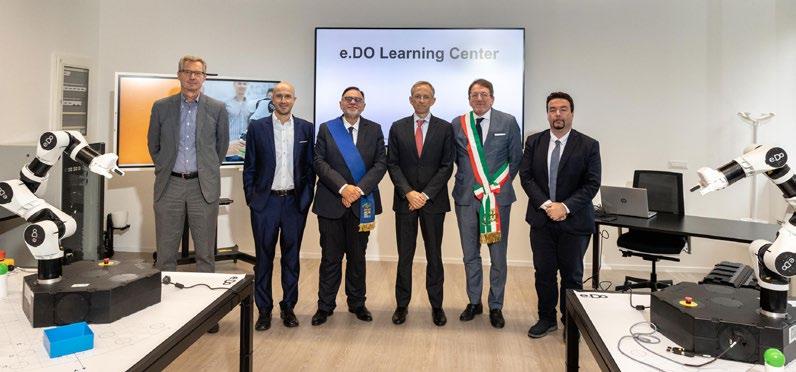
According to Ezio Fregnan, Comau Academy and Business Education Director, the interactive approach is proving to be highly successful. “The e.DO Learning Center is a key part of giving students the opportunity to experience hands-on learning from a 6-axis robot with the help of an expert trainer, and in doing so, allow them to build a solid foundation in STEM and entry-level robotics. It reflects Comau Academy’s commitment to anticipating future training needs and developing innovative and stimulating educational projects for the future generation of young talents.”
https://youtu.be/xFYDYXx0Dnk
https://www.comau.com/en/

35 | Industry USA | December 2022 23 MORE INFORMATION
AUTOMATION AS A SOLUTION TO THE LABOR SHORTAGE
Finding enough workers to fill open positions is proving to be a historically difficult task for US businesses of all sizes and in nearly every state. According to the most recent statistics, there are currently over 10 million job opportunities in the United States, but only about 6 million unemployed people.
Although it is expected that this historical labor shortage will persist in the coming years, many US businesses are looking for ways to operate with fewer employees wherever it is possible.
The labor shortage has a major impact on several industries, including Fulfillment and Distribution centers.
The demand for warehouse workers is increasing since the recent explosion of the E-commerce sector.
Automation that might have seemed out of budgetary reach is now justifiable, so manufacturing plant managers are deploying it more often than in years past.
Slam automation
If you look for increased sustainability and operational efficiency, the final 100 feet of fulfillment operations are one of the best parts of a distribution facility to focus on. This is the area where Scanning, Labeling, Application, and Manifesting takes place.
Especially in large enterprises where the efficiency is exponential, automating SLAM activities can provide a nearly instantaneous return on investment (ROI).
You can explain SLAM automation in simple terms: instead of having an employee scanning labels, you can place a scanner on the line; instead of having a person printing labels and sticking them on cartons, you can use an automatic Print & Apply labeling system.
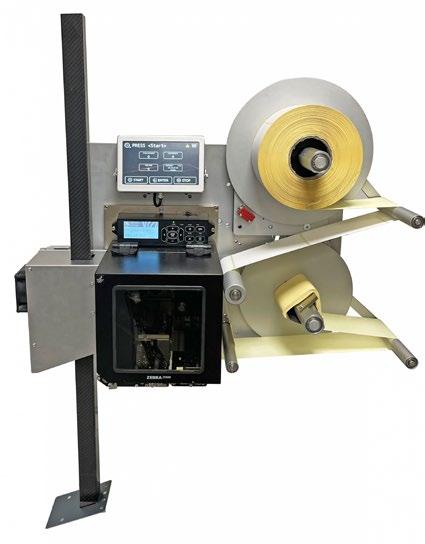
Automating SLAM can reduce costs and save time, as well as improve employee retention. When operators can lighten up on their tasks and allow machinery to take over parts of it, they have the opportunity to perform other job functions, which allows them to enjoy their work more. In the middle of a labor shortage, this is critical.

35 | Industry USA | December 2022 24 MORE INFORMATION PACKAGING & LABELLING
Other benefits to automating SLAM include a reduction in errors as the jobs are taken out of the hands of humans. Fewer touch points mean less opportunity for things to go wrong, and customer gains an increase in productivity.

Smart all-electric print & apply Print & Apply labeling systems are the core of every SLAM area.
By automating the last 100 feet with smart labeling technologies, you improve your accuracy rates—shipping errors are expensive—and your ability to provide more throughput grows dramatically.
Phoenix Labeling is excited to announce the launch of a new revolutionary Print & Apply system specifically designed for SLAM integration.
This new full-electric solution is built around a light yet robust linear applicator made of carbon fibers.
A powerful stepper motor allows great performance, while guaranteeing the maximum safety for the operators: the low torque of stepper motors and the total absence of pinching points, make this new solution the safest Print & Apply system of the market.
With a maximum stroke of 770 mm, the new SLAM applicator is the perfect solution to dynamically apply
identification labels on packages with different heights: a smart laser sensor detects in advance the height of the incoming package and instructs the full-electric applicator about the correct labeling height position.

A Wipe-On flexible label pad gently apply the label on the top surface of the product, without the need to use compressed air for the vacuum/blow processes.
https://www.phoenixlabeling.com/
35 | Industry USA | December 2022 25 MORE INFORMATION
COVAL ANNOUNCES ENHANCED RANGE OF MULTI-STAGE VACUUM PUMPS FOR HEAVY DUTY SUCTION APPLICATIONS
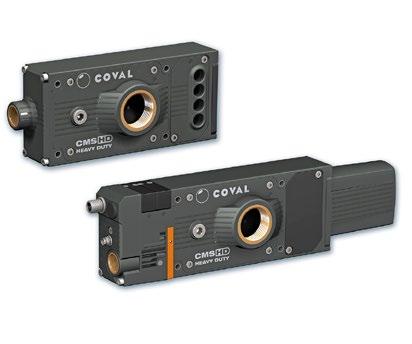
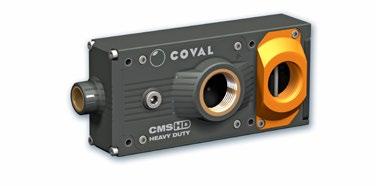

With its new CMS HD series of modular multi-stage vacuum pumps, COVAL offers a robust and powerful solution for applications requiring a high suction flow rate for the vacuum handling of a wide variety of objects. They are ideally suited to performing pick-up and transfer operations in applications such as the handling of porous parts or emptying large volume tanks.
Coval’s new CMS HD multi-stage vacuum pumps respond perfectly to the current needs of industry. Jointly developed with system integrators and industrial customers, they improve on the performance of previous generation models in three key areas: power, robustness, and modularity. The pumps are specified to handle flow rates up to 1300 Nl/min. The range is designed and manufactured in heavy duty quality, guaranteeing its resistance in harsh environments. The IP65 rated pumps are designed for a service life of 50 million cycles. Finally, thanks to their modular design, pump can be configured with a selectable flow rate, with or without piloting, and with three configurable exhaust solutions, depending on the application requirements. The modularity allows each of its sub-assemblies to be accessed individually for servicing. This also improves the reparability rate.
Easy to integrate
The compact pumps can be easily built into the plant process. Some models offer a fully integrated control system, making them easy to install, even where space is limited. The new CMS HD series is the first part of a complete range that, starting in 2023, will include an intelligent version with communications capability, integrating NFC technology and simple networking with the IO-Link communication interface.
Qualities that make the difference
• Robustness: designed to work in harsh environments

• Performance: combining power and efficiency for picking and transferring
• Modularity: each sub-assembly individually accessible for servicing
• Integration: integrates perfectly into the factory process www.coval.com
35 | Industry USA | December 2022 26 MORE INFORMATION PUMPS
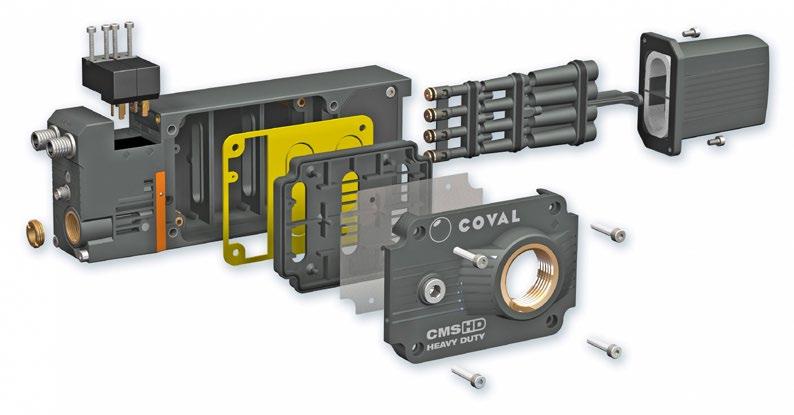
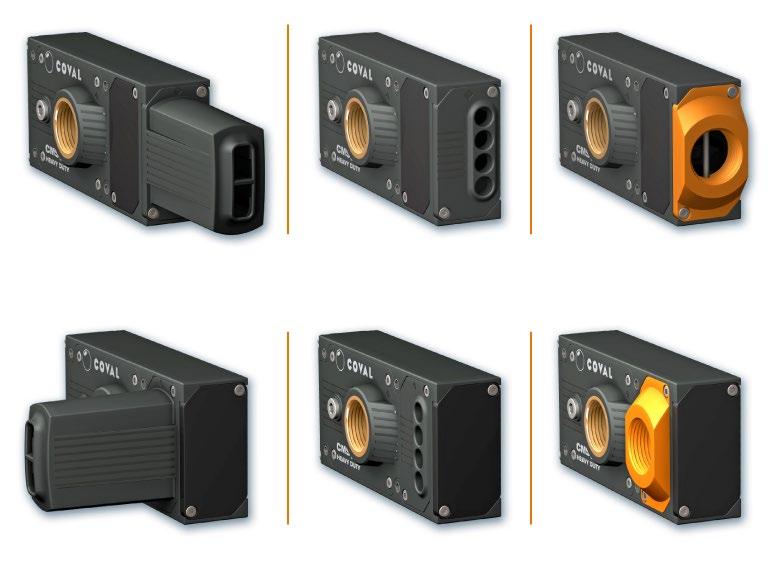
35 | Industry USA | December 2022 27
GENERAL MAGNAPLATE CS-1331 COATING REMOVES PVC RESIDUE AT HIGH TEMPERATURES
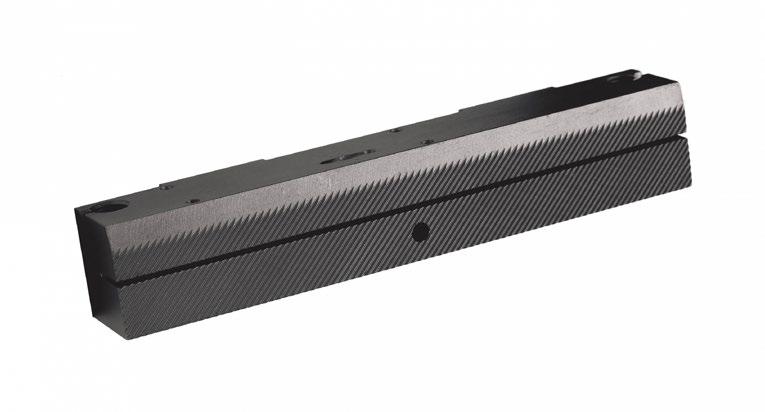
Magnaplate’s USDA/FDA compliant CS-1331 coating applied to a seal bar to prevent sticking and wear.
General Magnaplate, a world leader in the science of surface enhancement for metals and other substrates, has introduced CS-1331 for most ferrous and non-ferrous metals. CS-1331 offers exceptional polyvinyl chloride (PVC) plastic release and wear resistance properties with proven thermal stability up to 500 °F. By solving PVC sticking and wear, this coating reduces the downtime and expenses caused by these issues.
In repeated testing at 500 °F, CS-1331 released the PVC plastic during cleaning using a simple rag, without applying much pressure on different areas of the treated surface. It also outperformed other non-stick release coatings at the elevated temperature. CS-1331’s advantages include corrosion, outgassing and chemical resistance, as well as a low coefficient of friction (COF), high contact angle and USDA/FDA compliance.
Two General Magnaplate surface treatment families offer the CS-1331 composition: Lectrofluor®, a polymer matrix coating for harsh environments, and Plasmadize®, an enhanced thermal spray ideal for very large surfaces or parts.
www.magnaplate.com

35 | Industry USA | December 2022 28 MORE INFORMATION PAINTING AND COATINGS
KDSI-SR MODULAR CABLE ENTRY INSTALLED FROM THE OUTSIDE
Modular KDSI-SR cable entry in a finished control cabinet installation. Exploded view of the KDSI-SR cable entry system with frame, sealing elements and cables.
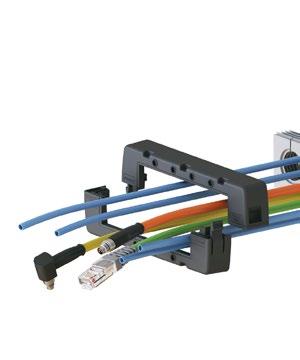

The system is designed for installation from the outside of a control cabinet, enclosure or machine. Part of the popular KDS Click cable management range, the KDSI-SR system, too, allows for comfortable, flexible reconfiguration of existing installations at any point in time. The components can be easily removed, exchanged and reassembled. The clever system concept for the separable insertion of individual sealing elements facilitates customized cable management – since cables with plugs do not have to be disassembled and reconnected for retrofits or servicing, the manufacturer’s warranty is retained.
The KDSI-SR system is based on the proven modular design and simple assembly concept of the KDS program. It merely features an inverse tapered design of the screw-on frame’s opening and includes an additional two-part cover with TPE seals in three levels. This ensures an absolutely tight fit of the sealing elements, which are available for one, two or four cables or as blanking plugs. The sealing elements with serrated edges and a tapered design provide IP66 ingress protection and reliable static strain relief in compliance to DIN EN 62444. They also allow for high packing density in comparison to cable glands. The halogen- and silicone-free KDSI-SR cable entry system is suitable for a wide range of requirements and ambient temperatures from -40 °C to 120 °C. KDSI-SR frames are available for 4, 6, 8 or 10 sealing elements in various configurations to match the number and diameters of cables.
https://conta-clip.com/us/

35 | Industry USA | December 2022 29 MORE INFORMATION CONNECTORS
Conta-Clip introduces the new, inverse and modular KDSI-SR cable entry system for reliable sealing, maximum flexibility and time savings feed-through for cables with and without plugs.
CONTA-CLIP PRESENTS SLIM GSM RETROFIT MODULE FOR SMS FAULT MESSAGING

Inspection and maintenance is not feasible for these offgrid controllers and therefore can raise considerable personnel costs. For such scenarios, Germany-based connection technology specialist CONTA-CLIP now offers a particularly economical and easy-to-retrofit solution: the GSM-TMM modem converts all messages from the controller’s fault output to text messages and automatically sends them to up to five recipients.
The GSM-TMM module uses the mobile communications standards LTE-M or NB-IoT, ensuring cost-efficient and energy-saving operation.
The compact device in a housing measuring only 40 mm x 65 mm x 110 mm is suitable for all controllers with a live interference output and is ready for use in just a few easy steps. For easy parameterization, the modem is connected via USB to a PC running at least Windows 10. During this process, the GSM-TMM does not require an extra power supply.
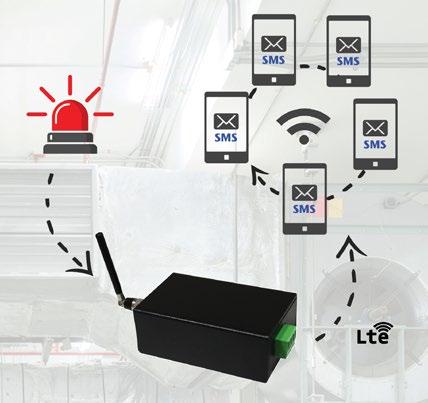
Once a SIM card has been inserted, the modem and controller fault outputs can be powered via a 230 V AC, 12 V DC or 24 V AC/DC supply connected to the modem’s external screw terminals. The modem features a red/green LED on its front, which, through permanent or flashing lights, indicates operating states, text message dispatch, configuration errors and potential reception problems.
https://conta-clip.com/en/

35 | Industry USA | December 2022 30 MORE INFORMATION ELECTRONICS
Many waterworks stations and agriculture applications use compact controllers for pump or ventilation systems, which are often installed in hard-to-reach or remote places.
CONTA-CLIP’s new GSM-TMM modem is designed for reliable and economical fault messaging via text in remote and hardto-reach applications.
EXXELIA EXPANDS ITS RANGE OF WET TANTALUM CAPACITORS QUALIFIED
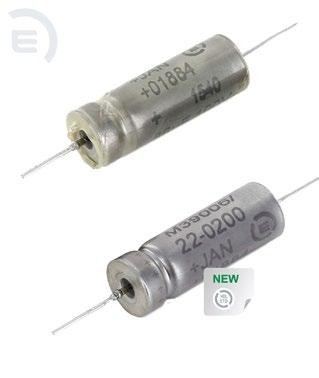
TO THE AMERICAN STANDARD MIL-PRF-39006

Exxelia, global manufacturer of complex passive components and subsystems for harsh environments, is expanding its line of MIL-PRF-39006/22 & MIL-PRF-39006/25 tantalum capacitors, with the support of the reliability level R.
Exxelia now offers the reliability level R, in addition to level M and P for the specifications MIL-PRF-39006/22 & MIL-PRF-39006/25, equivalent to CLR79 and CLR81 series. Available in all package sizes (T1 to T4), these fully sealed products cover voltages from 6 V to 125 V, deliver capacitance values ranging from 1.7 µF to 1200 µF, and are designed to operate at temperatures ranging from -55 °C to +125 °C and withstand the harshest environmental conditions. Performance highlights over solid tantalum capacitors include higher energy density, higher ripple currents, lower ESR and lower DC leakage current.

Engineers with complex design requirements looking for a product that can be easily integrated into projects such as power supplies & converters or filtering units for the aerospace and defense industries will be pleased. MIL 39006/22 & MIL 39006/25 Level R are now available for order with a lead time of 14 weeks.
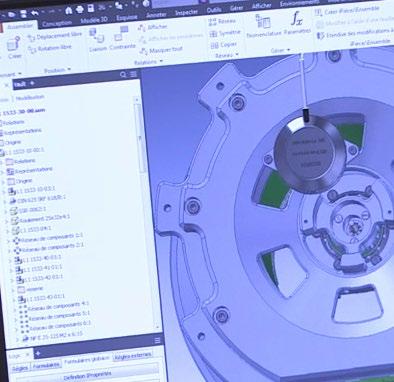
“The introduction of these new ranges builds on our decades of experience in supplying high reliability capacitors to the military market and demonstrates Exxelia’s ability to meet the most demanding specifications in terms of product development” says Jerome Tabourel, Exxelia’s vice president of sales and marketing. “We are proud to be one of the few MIL qualified tantalum capacitor manufacturers, and our flexibility and advantageous lead times will bring new supply opportunities.”
Technical
characteristics
• Capacitance from 1.7 μF to 1,200 μF
• Voltage from 6 V to 125 V
• Operating temperature -55 °C to +125 °C
• Very good shock and vibration resistance (option H available)
Download the complete datasheet www.exxelia.com
35 | Industry USA | December 2022 31 MORE INFORMATION ELECTRONICS
FAULHABER HELPS REGAINING THE ABILITY TO WALK INDEPENDENTLY


With the exoskeleton “Autonomyo”, this dream can now be made a reality. The active walking aid supports the weakened muscles and enables an intuitive sequence of movements that mimics the natural sequence. The additional power is supplied by six micromotors. To facilitate a harmonious interaction between the exoskeleton and its user, FAULHABER developed an innovative all-in-one component motor with a torque sensor.
Medical science distinguishes between more than 800 different neuromuscular disorders. As the name suggests, they affect both the nerves and the muscles. Some have an impact on the whole body, while others only affect it in certain areas. Fortunately, however, the majority of these disorders are relatively rare. Many of the affected patients suffer from severely restricted mobility. This is because, even though these disorders have many different causes and develop in many different ways, they all have one thing in common: muscle weakness (muscular dystrophy), which is progressive in many cases.
“If the muscle weakness occurs in the legs, walking becomes increasingly difficult, and eventually it becomes impossible without something to lean on,” explains Mohamed Bouri, Leader of the research group for Rehabilitation and Assistive Robotics (REHA Assist) at the Swiss technical university of Lausanne (EPFL). “The muscles are still functional but they cannot muster enough strength for the patients to stand stably or move their legs independently. As you would expect, this has an enormous impact on the patient’s range of movement and quality of life. The effects are similar to those of hemiplegia after a stroke. Our aim was to overcome these limitations as much as possible using motorized support –– therefore, still taking advantage of the patient’s contribution to his own movements.”
Lightweight partial assistance
The group leader is referring to conventional exoskeletons already in use leaning on humanoid inspired technology. These devices enable paraplegic people to walk without a crutch, but they weigh more than 40 kilograms. With only 25 kilograms, “Autonomyo” developed by REHA Assist is much lighter, and it works with the patient’s weakened but still partially functioning musculoskeletal system.

35 | Industry USA | December 2022 32 MORE INFORMATION BIOTECHNOLOGY
The device is fastened with a corset around the trunk and cuffs around the legs of the user. On each side, three motors enable movement by supplying the power that the muscles are lacking. In each case, one motor is responsible for the flexion and extension of the hip and another motor does the same for the knee. The third motor supports abduction and adduction of the leg at the hip joint – in other words, the lateral movement of the leg away from the midline of the body. All together, the motors help the patient to maintain their balance and to walk upright. In a recently conducted clinical study including persons with walking impairment, Autonomyo proved to be working as intended: The exoskeleton provided support while allowing freedom of movement, following the users’ intentions. The range of joint motion and gait cadence were not negatively affected.
Feedback from the magnetic measurement system

It is absolutely crucial that the device assists gait according to the user’s intention. “The initial trigger to change position – that is, to start walking – is expressed as a small change in the lower limb position,” explains Mohamed Bouri. “We detect it by combining the information from an inertial measurement unit, eight load sensors at the soles and the encoders of the motors that act as joint position sensors. All these data contribute to the assistance of balance.” When walking, the interaction between the device and the user is crucial. A torque sensor developed by FAULHABER is responsible to sense this interaction and thus to precisely implement the assistance strategy.
“The project of integrating a precise torque sensor in a motor started a few years ago, aiming to promote applications


such as Cobotics for safe human-robot interactions,” explains Frank Schwenker, Group Leader for Advanced Engineering at FAULHABER. “With Autonomyo, we are able to implement the concept in a challenging assistive technology application for the first time.”
The conventional technology for torque detection uses expansion strips on components; these strips are deformed by the force exerted. The weak point of their construction is the adhesive bond with which they are attached. The developers in the Advanced Engineering group have replaced these strips with a high-resolution measurement system. “This enables us to achieve a deviation of less than 1.5 percent in the measurement range of plus/minus 30 newton meters,” says Frank Schwenker. “The sensor therefore supplies a highly precise value for the response torque in the walking movement.”
This value plays a vital role in controlling the Autonomyo exoskeleton, which is of course also supplied with numerous other values. “Adjusting the device to the individual patients requires very differentiated calibration of the entire system,” explains Mohamed Bouri. “Using the various parameters and the feedback from the movement, the software calculates the control signals for the drives. The type and level of assistance from the motors are then determined based on these informations.”
Drive power and development potential
The six drive units in each device are supplied by FAULHABER. Their core component is the 3274 BP4 brushless motor with a diameter of 32 millimeters. It offers the most power of any
35 | Industry USA | December 2022 33 MORE INFORMATION
Servomotores CC sin escobillas BP4 de FAULHABER
Engranajes planetarios 42GPT de FAULHABER.
motor in its size class available on the market. Its power is transmitted by a 42 GPT planetary gearhead with a shaft produced especially for this application. A magnetic IE3 encoder supplies the position data to the controller. The torque sensor is integrated in the gearheads of the four motors for the flexion/extension movements.
The requirements on the drive units are typical for topof-the-range micromotors. High power with the smallest possible volume and weight, plus precision, reliability and a long service life are among the most important properties for this application. “It wasn’t particularly difficult to find the right supplier,” recalls Mohamed Bouri. “Having defined the specifications, the choice of possible motors was already reduced to just a small number of candidates. The astrophysics inter-faculty research group of our university already works with FAULHABER so they provided convincing recommendations, and a good relationship already existed. In addition, FAULHABER was already in a position to be able to develop the torque sensor within a short timeframe. That was very important for our project.”
For the time being, the component is not a series product and has so far been produced only for the EPFL in small quantities. However, development engineer Frank Schwenker can imagine many other areas of application: “High-resolution torque measurement can add significant value in all haptic applications. For example, for all types of robotic assistance in operating theaters where the surgeon guides the instrument and the machine controls the power and precision. The sensor can also provide a protective
function and be used to limit torque. What’s more, it is ideally suited to documentation processes in quality assurance in all cases where evidence of extremely precise torque values needs to be provided.”

https://www.faulhaber.com

35 | Industry USA | December 2022 34 MORE INFORMATION
SECO HELICAL SN8-13 MILLING SYSTEM DELIVERS PERFORMANCE AT A LOWER COST PER EDGE
To allow manufacturers to meet customer demand for lower part prices, the new Seco Helical SN813 milling system features double-sided helix inserts with eight cutting edges that significantly lower cost per edge to boost slotting, side milling and circular rough milling efficiency.
Built for difficult applications involving ISO P, M, K and S materials, the cutters offer application-specific subfamily designs featuring left or right-hand helixes, half- or full-effective teeth options, two front insert and many radii choices for long tool life and maximum chip evacuation. Reliable and user-friendly, the Helical SN8-13 also eliminates incorrect indexing of front and helix inserts, reducing operator error.
“The demand for price reductions is ongoing and forces shops to economize production operations wherever possible while still maintaining part quality and profit margins,” explained Benoît Patriarca, Global Product Manager Helical Milling at Seco Tools. “With the Helical SN813 system’s design combined with high performance insert geometries and grades, they can achieve all these goals with one tool.”
Perfect insert indexing Incorrectly indexed inserts can lead to machine downtime, quality issues and scrap. To eliminate the risk of mistakes, the SN8-13 milling system cutters are specifically designed to make mounting of front and helix inserts easy and foolproof, especially for inexperienced operators.
Economical alternative
As an economical alternative to milling products for depthsof-cut from 50 mm up to 100 mm (inch range from 2” up to 3”), Seco offers the Helical SN8-13 in a range of subfamilies built with its SN13 helix inserts.
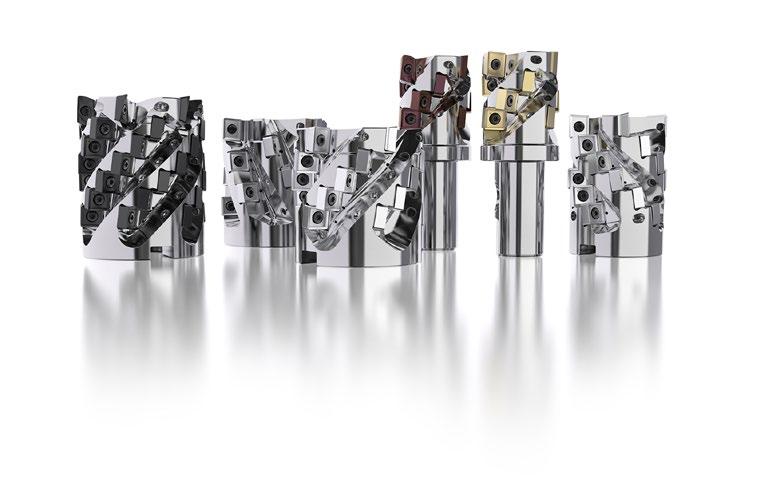
Those subfamilies include:
• R217/220.82: XO16 lead insert for standard use

• R217/220.82-H: AC15 lead insert for heavy duty applications
• R217/220.81: AC15 lead insert for low power situations
• R217/220.81-K: AC15 lead insert for weak fixturing situations
The range is designed with arbor style connections that match most standard holders as well as Seco Weldon, Weldon and Capto interfaces.
www.secotools.com/milling
35 | Industry USA | December 2022 35 MORE INFORMATION METAL WORKING
SECO AIMS TO ENHANCE THE SAFETY PARAMETERS BY 20% WITH A NEW STRATEGY IN PLACE
With the utmost employee safety, health and wellbeing in mind, Seco Tools has initiated a far-reaching safety strategy that involves both yearly and long-term goals extending out to the year 2030. With this long-term planning and continuous improvement approach, the company will significantly lower lost time injury frequency rates as compared to results achieved through typical industry safety programs that focus solely on yearly achievements.
Typical injuries in the manufacturing environment are often those involving hands and fingers, and these injuries can happen to everyone from facilities personnel to machine operators. For its safety strategy, Seco set the long-term goals of lost time injury frequency rate (LTIFR) at 1.1 by 2022 and 0.8 by 2030. Its total recordable injury frequency rate (TRIFR) goal is 2.0 for 2022 and 1.6 or lower for 2030.
An umbrella approach to safety Seco began planning its safety program last year, taking an umbrella approach. In doing so, the company focuses on analytics and evaluates not only where key performance indicators (KPIs) such as workplace hazards, injury frequency rates and the like lag, but also where leading indicators relate to the correlation between activities and results.
The Seco umbrella approach is a company-wide global strategy and one in which Seco establishes targets and objectives and communicates those to all its local sites. This ensures that all sites have access to the necessary data for them to conduct proper assessments then identify and close any existing gaps.
New incident reporting tool

For its long-term strategy, Seco adopted the incident reporting tool EHS360 to delve deeper into causes of safety issues and how they are investigated. To accomplish that,

35 | Industry USA | December 2022 36 MORE INFORMATION METAL WORKING
the biggest change in that system is a reduction from 130 root and immediate incident causes to 15 causal factors. The company also added a “5 Why” approach to the system that more accurately identifies root causes, which in some instances are not a single cause, but multiple causes.
In slimming down the causes, Seco is able to group them for more accurate analysis – tracking these causes over a longer period of time to identify potential trends and improve investigative results. Seco can then take the proper actions to correct the causes and minimize the risk of the same or similar incident happening again in the future.
“When you are working to improve safety, one year is too short. Effective analysis takes a lot of time, so we need more time to analyze the data, to target the gaps we find, to create collaboration and to improve,” explained Lowe Hjort, SMS Health & Safety Specialist at Seco Tools. “When it comes to safety, a company always need to have a long-time vision. That’s why we introduced not only yearly goals, but longterm goals as well.”
Adapt and improve
Employee safety is an ongoing commitment at Seco where the company continues to adapt to changing conditions and to identify solutions and activities to address and improve these varying conditions. The ultimate goal is a safer workplace, which the company will achieve through

collaboration and the sharing of knowledge as well as setting and achieving ambitious safety goals.
www.secotools.com

35 | Industry USA | December 2022 37 MORE INFORMATION
ORBEX OFFERS STANDARD IP65 SLIP RINGS WITH SHORT LEAD TIMES
The Orbex Group, a leading manufacturer of high-performance electric motors and slip rings, introduces standard slip rings with an IP65 protection rating, providing washdown tolerance in many food, beverage and pharmaceutical manufacturing applications.
Available immediately with short lead times, these washdown-ready slip rings feature stainless steel or aluminum housings, while their IP65-rated, sealed design enhances component protection in demanding environments. They also offer flexible mounting options with through-hole diameters ranging from 25 to 100 millimeters, or capsule style when a through-hole is not required, facilitating installation.

These slip rings support a wide range of standard industrial network protocols, such as Ethernet/IP, EtherCAT, Profibus and more. And, their modular and flexible design enables engineers to easily configure a solution to better fit customer needs.
www.orbexgroup.com

35 | Industry USA | December 2022 38 MORE INFORMATION MECHANICS DRIVES
WACHENDORFF PRESENTS WORLD’S MOST COMPACT ETHERNET/IP ENCODER

Universal Industrial Ethernet encoder with PROFINET, EtherCAT and EtherNet/IP. Wachendorff is expanding its range of Ethernet-based encoders: Encoders with the EtherNet/IP protocol are now available, including the most compact in the world: the WDGA58F. Wachendorff’s R&D team has succeeded in minimising the sensor to an installation depth of just 46.5 mm.
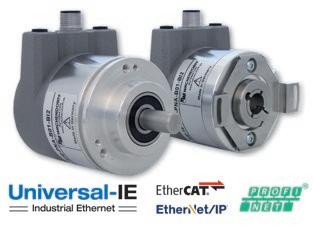
The encoders are certified by the ODVA. The resolution in single and multi-turn can be individually configured via an integrated web server (single-turn 16 bit, multiturn 43 bit).
The very high environmental data, e.g. temperature range from -40 °C up to +85 °C, shock 1,000 m/s² or vibration 50 m/s² at 10-2000 Hz, allow the use in harsh industrial environments as well as in mobile working machines.
The devices with hollow end shafts eliminate the need for additional couplings and the devices with shafts guarantee a long-lasting and stable connection with their very high bearing loads of up to 400 N.

In the Universal Industrial Ethernet version, it is possible to switch between Ethernet/IP, EtherCat and PROFINET. This noticeably reduces storage costs and increases flexibility.
https://www.wachendorff-automation.com/

35 | Industry USA | December 2022 39 MORE INFORMATION MECHANICS DRIVES
NEW INTERROLL HELICAL MODULAR CHUTE PROVIDES OPTIMUM USE OF SPACE

With the new Helical Modular Chute (HMC), Interroll provides a simple and easy solution for vertical transport in confined spaces. With a durable and robust steel construction, this product serves a wide range of material handling applications for the retail & E-commerce, warehousing & distribution as well as courier, express & parcel sectors.
Flexibility and space savings are highly desired key features in material handling: During manufacturing, warehousing and distribution, goods with wide varieties of quantities, sizes, weights and packaging (i.e. for cartons, boxes or bags) have to be moved. An important performance factor is therefore to be prepared for the most diverse material flow requirements. For cases in which goods regularly also have to be moved downward, a chute that is as flexible as possible and that works vertically is essential. One distinctive characteristic of the HMC is its extremely small footprint, guaranteeing optimum use of the space even in the case of retrofit projects.
Proven reliability and energy-saving operation
Developed by the Center of Excellence for Belt Curves in Canon City, United States, the HMC has been tested in continuous operation under the highest performance demands, with the focus on maximum efficiency, operational reliability as well as a very long service life. As a full gravity solution, no power is required.
With the available conveying widths of 700, 900, 1100, 1250 mm, a decline angle between 18 and 26 degrees, an entry slide width of 2.5m max as well as an arc angle range between 90 and 1800 degrees, the MHC offers optimum flexibility.

The Helical Modular Chute is delivered unassembled for installation. For more safety and smooth transitions, entry and exit slides are available upon request. It is immediately available in the Americas and will be available globally at the beginning of next year.
https://www.interroll.com

35 | Industry USA | December 2022 40 MORE INFORMATION HANDLING
PRODUCT
MONTH’S

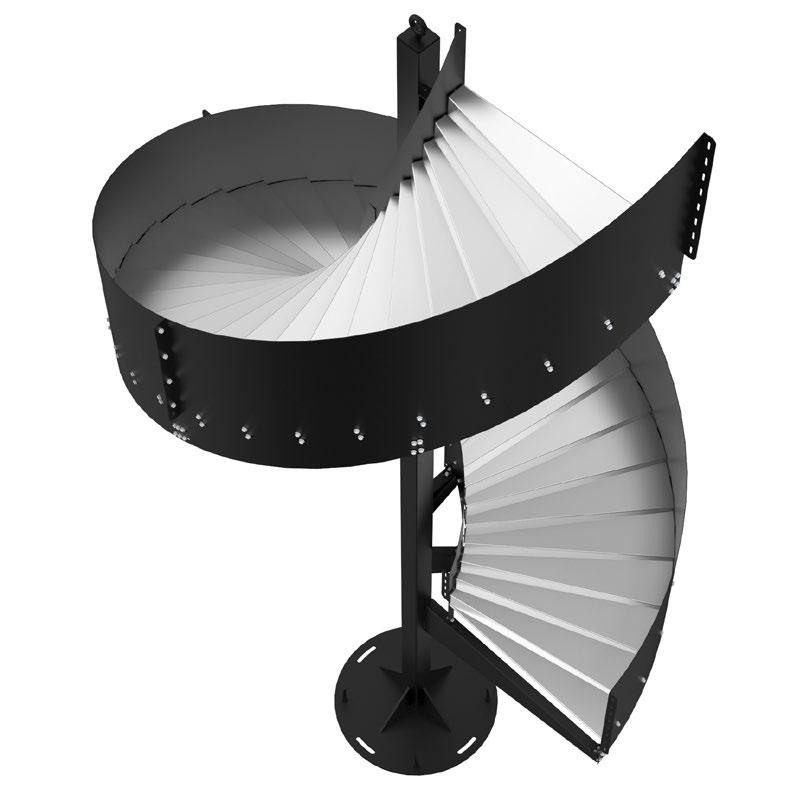
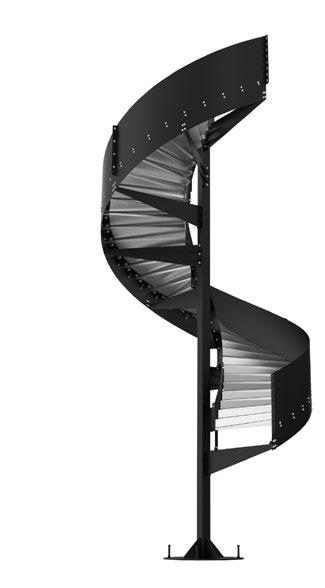
35 | Industry USA | December 2022 41 MORE INFORMATION NEWS
The new Helical Modular Chute allows for flexibility and optimum use of space with vertical conveying
3D-MID – MINIMIZED SENSING HIGH-TECH WITHIN THE PATIENT


When it comes to miniaturization, the ideal partner is the leading 3D-MID supplier HARTING. The company is located in the innovative heart of the Swiss watch industry in Biel, which is also a growing hub for medical device technologies. This location was chosen with care, because in this region people have grown up in a world of micromechanics - generation after generation.
Japanese corporation Yaskawa coined the term “mechatronics” in 1969 by combining “mechanical” and “electronics.” Since then, steady developments in technology—notably at drives systems and wireless connectivity—have significantly expanded its usage.
Today, medical devices are a major focus of mechatronics. One of its breakthrough innovations are Mechatronic Integrated Devices (3D-MID). It’s a technology that allows higher density integration of electronic components into the smallest possible space.
3D-MID or 3D-Circuits, has the potential to transform medical industry as we know it. As medical devices such as hearing aids and dental instruments become smaller and smaller, the manufacture of their most important elements - traditionally printed circuit boards (PCB’s with wires and other electrical parts) require much more delicacy and precision.
High-end miniaturization is facilitated by 3D-Circuits: a fantastic combination of mechanical and electronic integration.
This article breaks down everything you need to know about 3D-MID technology, its many benefits, and its applications in the medical device industry.
All About 3D-MID Technology HARTING’s 3D-Circuits technology makes it possible to combine mechanical and electronic functions into a single component to fit into the smallest spaces.

The electronic circuit can be built into the device itself, making it more compact and functionally dense. By using injection-molded circuit boards, the number of process steps, assembly times, and parts can all be drastically cut down.
3D-MID technology has become incredibly useful in many industries, especially so in the world of medical devices, where it drives miniaturization.
35 | Industry USA | December 2022 42 MORE INFORMATION MEDICAL DEVICES
This is a substitution for an endoscope. You basically swallow it like a pill which makes way more comfortable than an endoscope.

How 3D-MID Technology works
Device designers can go above and beyond the limits of traditional manufacturing with the help of 3D-Circuits. The sky’s the limit when electrical and mechanical functions can be unified in a single three-dimensional component.
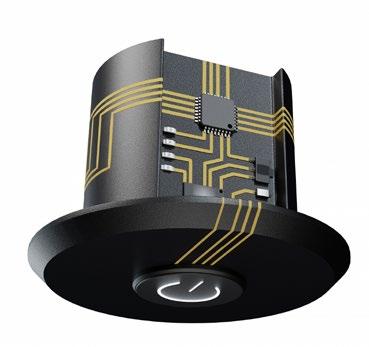
These components are constructed using very malleable bits of plastic through injection molding. This process makes it possible to create anything with precise measurements according to the requirements laid down by final customer usage.
Injection molding is perfect for mass production of products with complex geometries and in miniature sizes, such as the components of high-end medical devices. A process called laser direct structuring (LDS), developed by LPKF Laser & Electronics in 1996, can then draw the needed electrical trace layout to these components, which will be made conductive in a subsequent chemical plating process. As HARTING unifies all these process steps under one roof, customers benefit from quality “Made in Switzerland”.
With 3D-MID technology, there are virtually no limitations for designers. This opens up a world of possibilities and potentially huge savings for manufacturers and consumers alike. By combining mechanical and electrical hardware, the design and creation of electronic devices with very complex functions become easier and much more affordable.
Because of its adaptability, mechatronics can be used in an ever-expanding variety of medical applications, ranging from bed positioning systems to robotic surgical equipment.
By integrating functions and the three-dimensional routing of circuit tracks, the design space for the electronics of hearing aids can be optimally utilised.
3D-MID Technology in the Medical Field
In the last few years, 3D printing has accelerated many advancements in the world of medicine, with millions of people benefiting from components and devices created with ease. And now, 3D-MID is poised to change the face of medicine forever.
This technology takes all these advancements one giant step further by using mechatronics to create devices with an even wider range of electronic functions that fit in the smallest of spaces.

Mechatronics allows for the extreme downsizing or miniaturizing of medical applications, enabling examination, sensing, and monitoring from within the patient. With such technology, medical devices can be designed to be much less invasive, leading to a significant improvement in patient care. With its many years of experience - HARTING started its activities in this field in 2003 – the team is familiar with the requirements of the medical market. The numerous series production projects confirm this. Taking large medical machines and devices and putting them into a more compact package is a big part of what 3D-Circuits brings to the table. It offers significant improvements to changing how medical devices are used today.
One of the most important benefits of this technology is that it makes these advances possible without sacrificing quality. You may think that shrinking a medical device down would make it less powerful or effective, but with 3D-MID, that isn’t the case at all.
In fact, as 3D-Circuits continues to grow in popularity, it will only get better, opening up new options for even smaller and more effective medical devices, from hearing aids and implants to surgical and dental instruments.
35 | Industry USA | December 2022 43 MORE INFORMATION
By implementing a 3D-MID ring switch in the dental instrument, HARTING was able to significantly improve the ergonomics and weight of the instrument while simultaneously reducing the assembly effort.
HARTING has realised a microphone carrier in 3D-MID design that precisely aligns the microphones of the hearing aid and at the same time integrates the electrical contact.


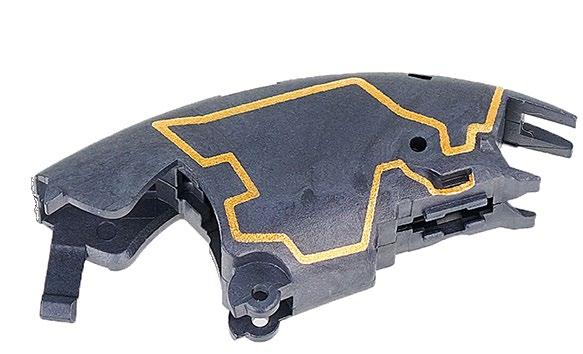
The Benefits and Uses of 3D-MID Technology
Miniaturization is one of the most critical trends in healthcare that affects how mechatronics technology is used. The development of ever-smaller instruments, devices, and equipment enables less invasive treatment methods, allowing faster recovery times and much-improved patient care.
These micro actuators and miniature sensors also propel the development of small mechatronics systems for the following applications:
• Handheld diagnostics for use at the point of care, including ultrasound and blood testing
• Scientific instruments for flow cytometry, DNA identification, pathogen detection, and DNA sequencing
• Medical imaging using small, precise modules for lens control and laser tuning
• Implantable devices that can be dynamically adjusted inplace
• Mobile miniature robots
• Micropumps and auto-injectors for drug delivery products
There has also been a shift toward placing a greater emphasis on the convenience and aesthetics of medical technology as well as the level of comfort experienced by a patient. This is because more treatments are shifting from hospitals to outpatient settings, and today’s discerning customers now expect a more positive experience as a patient.
Redesign efforts for medical equipment aim to make them easier and more convenient for patients to use and manage in the long run.
Even conventional hydraulics are being phased out and replaced with mechatronics as the method of choice for controlling motion. Mechatronics systems are much simpler to operate, create less noise, weigh less, and are more compact.
Some of the value-added benefits that medical organizations can gain from using mechatronics in place of more conventional manufacturing methods:
- The miniaturization of medical devices
- Development of low-cost disposable gadgets, which has become a pressing requirement
- Device portability

- High levels of accuracy and precision
- Improved performance in all aspects
- Design freedom
- Weight reduction
- Simplification of products
Conclusion
The most important developments in mechatronics lead to new technologies that will shape the healthcare of the future so that devices are safer, more portable, and, most importantly, painless. HARTING’s 3D-Circuits technology is changing how medical devices are made, especially complex equipment with integrated electronics that must fit into increasingly miniscule spaces.
www.3D-Circuits.com
35 | Industry USA | December 2022 44 MORE INFORMATION
BELL-EVERMAN SERVOBELT™ ARC DRIVE FEATURES

NEW LARGE-DIAMETER ROTARY STAGE
Bell-Everman has introduced a new multi-axis transfer robot based on its proven ServoBelt™ backlash-free belt drive technology. Called ServoBelt Arc Drive, it features custom designed rotary and tilt axes that precisely position semiconductor glass panels.

Measuring 450-mm across, the robot’s large rotary axis is built around a ServoBelt drive mechanism and a proprietary Bell-Everman bearing design. The stage offers a torque rating of 200 N-m (400 N-m ultimate), speeds up to 150 rpm and repeatability to ±22 µrad (0.001º).
The large-diameter rotary stage on this robot can be scaled to larger sizes and is available as a separate product. “The combination of ServoBelt and our bearing design results in a low-cost, light-weight alternative to heavy, expensive table drives,” says Michael Everman, Bell-Everman’s Founder and Chief Technical Officer.
The robot’s tilt axis, which moves the entire rotary stage assembly and its payload up to 90 degrees, is driven by an arc-shaped ServoBelt drive mechanism, which can also be scaled and applied to other tilt applications.
www.bell-everman.com

35 | Industry USA | December 2022 45 MORE INFORMATION MECHANICS DRIVES
ROBUSTEL RELEASE NEXT GENERATION IOT GATEWAYS FEATURING EDGE COMPUTING AND ROBUSTOS PRO A NEW DEBIAN BASED OPERATING SYSTEM

With a deep, well-established product range specialising in industrial IoT/M2M solutions, Robustel are always looking for new and innovative ways to service customers in key industrial verticals. Since the company’s founding in 2010 the key directive has been to listen and engage with the market to provide solutions that meet real world requirements and a competitive price point allowing for the scale and potential of massive IoT.
With the release of Robustel’s first generation 5G Industrial Gateway the R5020 in 2020, the company has seen a massive global trend in customers relying on Cloud IoT infrastructure to deliver a variety of IoT solutions across all verticals; However, there is a growing subsector of customers with demand for more processing being performed at the network edge, to avoid unnecessary network noise and congestion from high volumes of data being streamed over the cellular network.
The requirement for EDGE/FOG processing sees a need for new generation devices, boasting the cutting-edge network connectivity and management features customers have come to know from Robustel devices but with the inclusion of much higher levels of onboard smarts and processing combined with a more versatile and scalable operating system.
This is where the Edge Gateway series from Robustel hopes to revolutionise the industrial computer + router market by providing products that are not only available at a mass market price point but that also offer specifications and features that customers desperately need.

35 | Industry USA | December 2022 46 MORE INFORMATION INDUSTRIAL COMMUNICATIONS
strengthen their industry leading portfolio of
and gateways with a
new series of cost competitive, fully integrated EDGE
Robustel
Industrial IoT routers
brand-
Computing gateways.
“Traditionally the industrial edge IoT market has been the domain of two very distinct solutions…” says Robustel Global SVP of Sales and Product Marketing, Desmond Kuang, “We have seen customers unable to scale successfully because they are either buying a solution that is completely over specified for their requirements or they are trying to build their own solution with an industrial PC + router combination that adds an additional point of failure. Our Edge Gateway products are designed to solve both market issues in a single elegant solution.”
The Edge Gateway series from Robustel will initially launch with 3 product lines, of which the EG5100 and LG5100 with ARMv7 Architecture and EG5120 with ARMv8:
• The EG5100 – Industrial EDGE router with global 4G/LTE connectivity
• The EG5120 – Industrial router with global 5G connectivity (3GPP Release 16) and 2.3 TOPS NPU to support AI Applications
• The LG5100 – An industrial LoRaWAN EDGE Gateway with global 4G/LTE Backhaul.
To support the new hardware, Robustel are releasing a brandnew version of their popular Linux based operating system RobustOS, called RobustOS Pro. This new operating system offers customers a Linux Debian11 (Bullseye) environment with support for Docker based applications. This move to a broadly adopted platform allows Robustel customers
to rapidly develop, test and deploy new applications in whatever language they are comfortable developing in; in addition to giving customers access to over 50,000 existing applications in the Debian repository.
With these products Robustel hopes to enable adoption in cutting edge IoT applications like:
- Robotics
- Smart Cities
- Automated/Autonomous Vehicles
- Camera based image recognition
- Real-Time Energy & Grid Management and so much more…
Samples of Robustel’s Edge Gateway series are available now for proof of concept and design work from any of Robustel’s global distribution partners with mass market availability planned for Q4 2022.
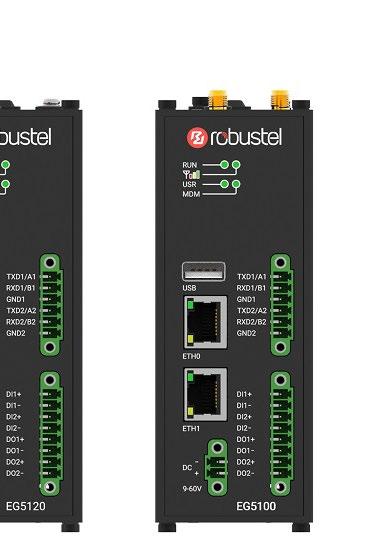
The EG5100, EG5120 and LG5100 shared features:
- Utilises highly stable cellular connectivity for global band coverage.
- High performance engine for running complex applications.
- 2 X RS232/RS485 ports for connection to industrial devices.
- 2 X DI and 2x DO simple monitoring and control.
- Dual SIM card slots for multiple back-up communication options.
- Wide operating temperature ranges, ideal for industrial applications.
- Supports C, C++, Java, Python, giving users the ability to develop their own applications.
- Access to more than 50,000 applications from the Debian repository.
- Access to VPN options like Wireguard, IPsec and OpenVpn. - Full Modbus TCP and RTU to support transfer to cloud platforms.
- Robustel’s management platform RCMS for effective management of large devices.
The EG5120 feature: - Cutting-edge (Release 16) 5G interface
The LG5100 feature:
- Supports global LoRaWAN frequency bands
- Compatible with LoRaWAN and private protocols
- Supports embedded LoRaWAN network server
- Up to 8 channels supports receive data simultaneously
- Supports Packet Forwarder Version 2.2.1 and Packet Forwarder Protocol Version 1
https://www.robustel.com/en/robustos/

35 | Industry USA | December 2022 47 MORE INFORMATION
AGILOX NORTH AMERICA OPENS NEW CLIENT EXPERIENCE AND FULFILLMENT CENTER


AGILOX, the leading provider of Autonomous Mobile Robot forklift solutions, is growing at a rapid pace. In order to keep up with the increased demand, its US based subsidiary has opened a new Client Experience Center and expanded its fulfilment operations.
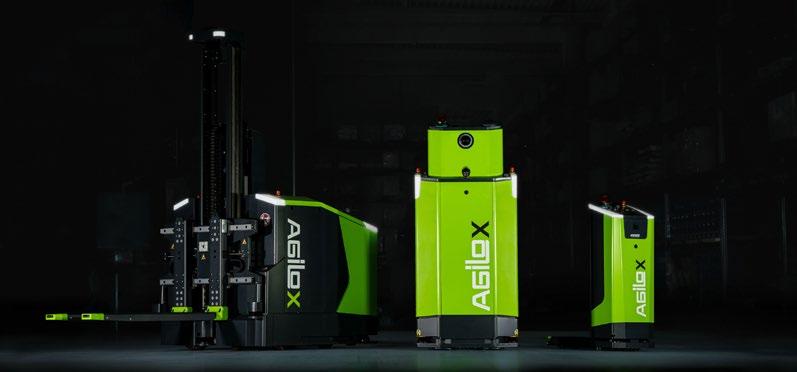
The new 30,000 sq ft facility in Flowery Branch, GA allows AGILOX to welcome existing and future clients to experience the full width of capabilities of all AGILOX AMR solutions available to date: The allrounder AGILOX ONE, the powerhouse AGILOX OCF, the box carrier AGILOX BCO, and soon the brand-new dolly mover AGILOX ODM.
With the expansion into the new facility AGILOX was also able to significantly grow its team, tripling the number of experienced technicians, project managers and customer education specialists who support clients in finding the right AMR solution and implementing the robots on site in less than a year.
As AGILOX North America CEO Andreas Boedenauer points out: “The new facility dramatically increases our ability to educate our clients about the advantages of our AMR solutions, and to train our customers in operating, administering, and maintaining the vehicles. It even allows us to replicate a client’s environment and tailor the training sessions to their specific needs.” AGILOX has initiated a training academy with activities running from half-day hands-on experiences to weeklong in-depth training courses which enable their customers to build up substantial inhouse knowledge to manage the fleet of AMRs.
For more information, please reach out to Holger Zerfass at (687) 365 0290 ext. 713 and Holger.Zerfass@agilox.net www.agilox.net
35 | Industry USA | December 2022 48 MORE INFORMATION HANDLING

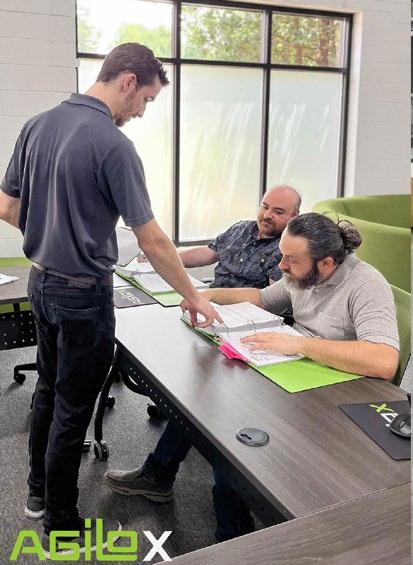

35 | Industry USA | December 2022 49
AUTONOMOUS NAVIGATION – WITH MILLIMETER PRECISION
With uEye Warp10, IDS launches ultra-fast 10GigE industrial cameras.

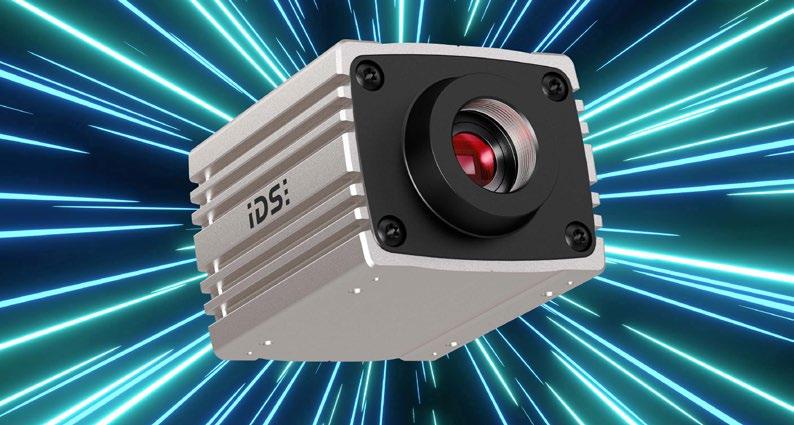
Faster than any other IDS industrial camera: uEye Warp10 with 10GigE.
With high speed to new spheres! When fast-moving scenes need to be captured in all their details, a high-performance transmission interface is essential in addition to the right sensor. With uEye Warp10, IDS Imaging Development Systems GmbH is launching a new camera family that, thanks to 10GigE, transmits data in the Gigabit Ethernet-based network at a very high frame rate and virtually without delay. The first models with the IMX250 (5 MP), IMX253 (12 MP) and IMX255 (8.9 MP) sensors from the Sony Pregius series are now available.
Compared to 1GigE cameras, the uEye Warp10 models achieve up to 10 times the transmission bandwidth; they are also about twice as fast as cameras with USB 3.0 interfaces. The advantages become particularly apparent when scenes are to be captured, monitored and analysed in all details and without motion blur. Consequently, applications such as inspection applications on the production line with high clock speeds or image processing systems in sports analysis benefit from the fast data transfer.
The GigE Vision standard-compliant industrial cameras enable high-speed data transfer over cable lengths of up to 100 metres without repeaters or optical extenders via standard CAT6A cables (under 40 metres also CAT5E) with RJ45 connectors. The robust uEye Warp10 cameras are initially offered with C-mount lens holders. IDS is already working on additional models. In the future, versions with TFL mount (M35 x 0.75) will also be available for use with particularly high-resolution sensors up to 45 MP. The cameras are supported by the powerful IDS peak software development kit.
In the IDS Vision Channel, the experts from IDS present the features and possible applications of the new camera family in detail. The video is available here free of charge. All you need is a free IDS website user account.
https://en.ids-imaging.com/ueye-warp10.html

35 | Industry USA | December 2022 50 MORE INFORMATION
OPTICS
AMPHENOL SOCAPEX’S MPO FIELD TV CONNECTOR BRINGS ROBUST & HIGH DENSITY SOLUTION FOR OPTICAL LINKS IN HARSH ENVIRONMENT APPLICATIONS
Amphenol SOCAPEX’s MPO Field solution enables users to transform a standard MPO patchcord into a robust connector designed to resist the harshest environments.
The MPO patchcord is integrated into a metallic plug based on MIL-STD-38999 Series III, shell size 13 Military connector, to protect it from shocks, dust and fluids. There is no requirement for field termination.
MPO Field TV connector combines high speed and high density of well-known MPO/MTP Fiber Optic connectors using MT ferules, with high resistance of MIL-DTL-38999 Series III Military shells for various harsh environment applications such as high speed embedded network backbones for battleships, armored vehicles or airplanes and trains, datacenters in harsh environments, trackside measuring & inspection systems for trains, high resolution real time video, passenger entertainment…
MPO Field connectors feature:
High Density and Speed
- Take advantage of the High Data Rates and Optical density offered through the use standard Fiber Optic MT Ferrules
High Density and Robustness

- The 12 or 24 fiber channels are integrated into 28 mm diameter 38999 metal shells, with tri thread coupling mechanism
- The solution is IP68 sealed when mated and shocks & vibration resistant
Easy to implement
- No tool or field cabling are required. The solution allows anyone to transform a standard MPO Patch cord or more complex assembly into an harsh environment connector very easily.
Check out our assembly video: https://youtu.be/WkmZGr4MrxA
“This is a great new product range to bring under the Amphenol SOCAPEX product offering in order to respond better to the needs of the market. The MPO Field TV solutions range enlarges our core offering and further defines our footprint in fiber optics applications.” comments Emmanuel Lambert, Amphenol SOCAPEX Fiber Optics Product Manager.
https://www.amphenol-socapex.com/en/products/ connectors/fiber-optics/mpo-mtp-field
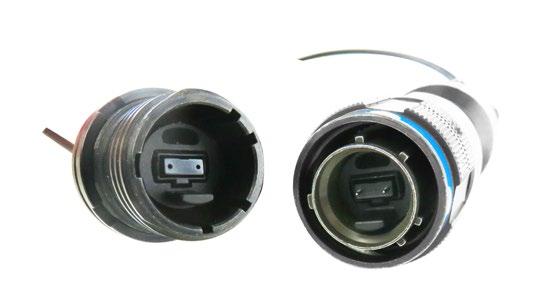
35 | Industry USA | December 2022 51 MORE INFORMATION CONNECTORS
EMERSON’S NEW VALVES FOR HYDROGEN FUELING STATIONS ENSURE MAINTENANCE SAFETY, MINIMIZES LEAKS
15,000 pounds-per-square-inch double block bleed and hand valves offer redundant protection from high pressure and superior sealing technology to avoid leaks.

Emerson has launched the TESCOM™ Anderson Greenwood Instrumentation H2 Valve Series for hydrogen applications up to 15,000 pounds-persquare-inch (psi) (103.4 megapascal (MPa)). The new solution reliably isolates process pressure in high pressure gas applications such as hydrogen fueling stations and tube trailers, reducing fugitive emissions and improving safety.

As it moves from tank to pump, hydrogen is transferred at pressures of up to 15,000 psi (103.4 MPa). To protect personnel and prevent leaks, it must be effectively controlled and isolated. The Double Block Bleed (DBB) valve’s positive double block arrangement provides two layers of positive shutoff that shield maintenance staff from high pressure during instrument maintenance. Its modular design reduces the number of potential leakage points, and the reinforced sealing technology reduces the risk of fuel entering the atmosphere through the valve stem.
Among the cleanest fuels when produced using renewable resources, compressed hydrogen gas is used to power fuel cell electric vehicles (FCEVs). In 2021, 142 new hydrogen refueling stations began operating, the biggest increase in a single year, raising the total to 685 active stations worldwide. And, in January 2022, Global Market Insights Inc. predicted that the FCEV market will exceed $15 billion by 2027. To meet this growth demand, fueling station original equipment manufacturers (OEMs) must source reliable, high-performance components to ensure overall equipment effectiveness and ensure station safety.
“Given the pressures that hydrogen is subject to in these applications, it’s critical that equipment operates safely and reliably, every time. That’s why we’re committed to specifically developing components to help our customers effectively store and precisely control compressed hydrogen gas,” said Rob Lindquist, director of global marketing for TESCOM precision fluid control at Emerson.
The hand-operated, maintenance-free design of the hand valves and double block and bleed valves in the H2 Valve Series minimizes maintenance and downtime. With low operating torque and adjustment-free seal technology, these hand valves deliver a low cost of ownership in a compact solution.
For OEMs looking to safely minimize risks for operators, the H2 Valve Series provides several safety features. Each valve has a convenient QR code, allowing operators to quickly access the valve’s specs during maintenance and installation. The product also ensures that no high-pressure liquid or gas is released during maintenance. The valves are compliant to the ISO 19880-3 hydrogen fueling standard.
With this new 15,000 psi (103.4 MPa) product line, Emerson offers a comprehensive portfolio of TESCOM solutions for safe and precise operation of hydrogen fueling stations.
www.Emerson.com/TESCOM

35 | Industry USA | December 2022 52 MORE INFORMATION HYDRAULICS AND PNEUMATICS
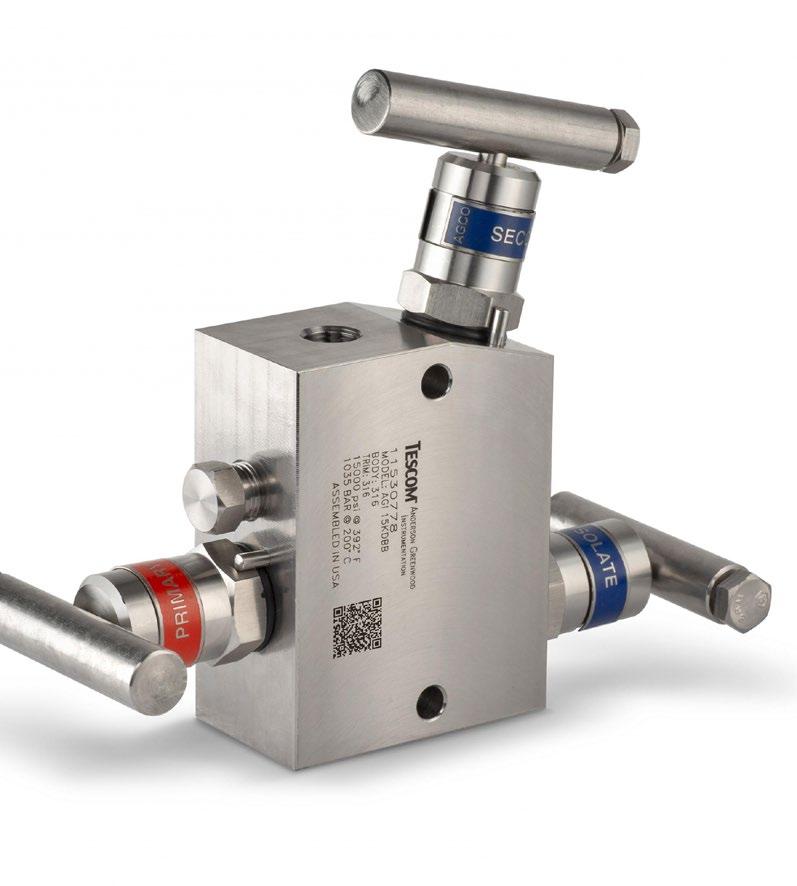
35 | Industry USA | December 2022 53 NEWS
The Emerson H2 Valve Series 15,000 psi DBB and hand valves are handoperated with a maintenance-free design, which minimizes downtime.
THE LOGIDRIVE SYSTEM FROM NORD DRIVESYSTEMS PROVIDES A COMPLETE, OPTIMIZED SOLUTION IDEAL FOR INTRALOGISTICS AND AIRPORTS

The modular system is engineered to be maintenance-friendly, cost effective, and energy efficient even with partial load ranges and low speeds.
The DuoDrive integrated gear unit and motor combine with the total LogiDrive package to form a highefficiency solution capable of high-power density, quiet operation, and simple Plug-&-Play commissioning.
NORD’s LogiDrive® complete drive solution reduces planning and commissioning efforts by offering an energy efficient, standardized, and service-friendly system that is Industry 4.0 Ready! Permanent Magnet Synchronous Motor (PMSM) technology enables the LogiDrive system to maintain high efficiency even in partial load ranges and low speeds – making the solution especially suited towards intralogistics, warehousing, and airport applications.
The LogiDrive package consists of: - High efficiency two-stage bevel gearbox or DuoDrive - IE4 or IE5+ permanent magnet synchronous motor - Decentralized variable frequency drive - Power plug connector - M12 connectors
- Incremental encoder - Pre-assembled cables - Standardized hollow shaft diameters


This solution reduces system variants through standardized geared motor selections tailored specifically to application needs and a large operable speed range via variable frequency drive technology. Simplifying engineering and selection into a compact, modular design significantly reduces spare parts inventory, enables fast commissioning through Plug-and-Play technology, and allows replacement of individual components. The plug-in connections on the base product also enable easy maintenance, service, and installation.
When it comes to gearbox options for the LogiDrive package, two-stage helical bevel gear units or the new
35 | Industry USA | December 2022 54 MORE INFORMATION MECHANICS DRIVES
DuoDrive integrated gear unit and motor are available. Twostage helical bevel gear units are made from high-strength aluminum alloy and feature an open housing option for better heat dissipation for high axial and radial loads. They excel in conveying and processing applications while providing a more efficient and reliable solution than typical worm units. The DuoDrive integrated gear unit and motor features a compact, UNICASETM housing and delivers an extremely high gear efficiency of up to 92%. These drives also feature high power density, quiet operation, and fewer wear parts for low maintenance and a long service life.
NORD’s IE4 and IE5+ synchronous motors provide some of the highest efficiencies currently available. The use of this technology in the LogiDrive system minimizes overall costs during service life, provides a faster return on investment, and maximizes system availability. When these motors are paired with the NORDAC LINK VFD, high precision regulation and increased system accuracy is achieved. This optimized combination also results in large overload capacities capable of constant torque over a wide speed range.
NORDAC LINK variable frequency drives offer quick installation and servicing thanks to their quick-disconnect cable options, integrated maintenance switch, and local manual control options. These decentralized VFDs feature functional safety options, an internal braking resistor for controlled, dynamic braking, and parametrization via plugin control modules, NORDCON software, or NORDCON app.
As part of the complete LogiDrive package, NORDAC LINK supports a large speed range – enabling automation for a variety of applications such as stacker cranes, automated transports, baggage handling systems, and conveyor systems.
The LogiDrive package provides a complete drive solution tailored to specific system needs. Not only does the modular design provide versatile arrangements, it also reduces the number of variants, saves money in Total Cost of Ownership (TCO), and allows for each unit to be individually serviced –minimizing maintenance, downtime, and repair costs.

www.nord.com

35 | Industry USA | December 2022 55 MORE INFORMATION
GAIN VERSATILITY AND REDUCE COSTS WITH SECO X-HEAD QUICK-CHANGE MILLING HEAD SYSTEM
To provide manufacturers versatility and high value, Seco has launched its new X-Head quickchange replaceable milling head system. With the system, users can quickly and easily change between various solid-carbide milling geometries and types to optimize milling operations while reducing manufacturing costs and tooling inventories.
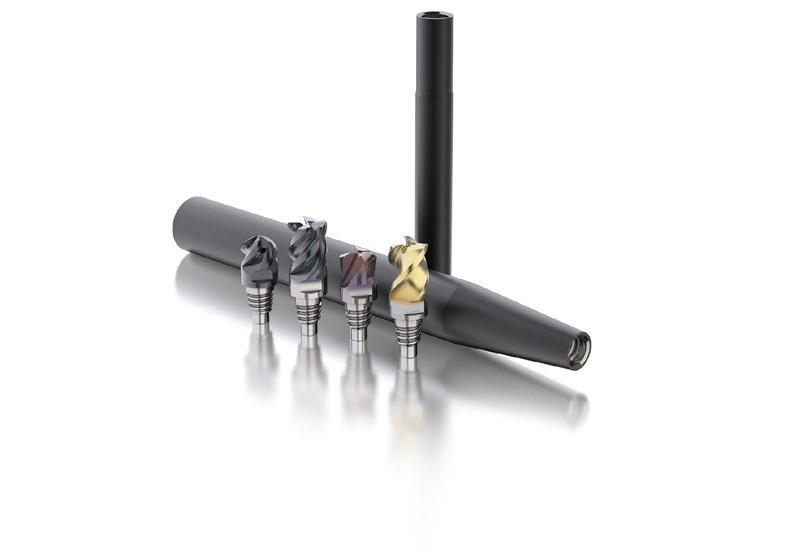
Fast and easy tool changes with the turn of a wrench Milling heads mount to a variety of available shank lengths for even greater versatility, with short and long-reach capability for a variety of overhang lengths. Head changes only require a simple turn of a wrench, eliminating the need to remove the holder from the machine to change the cutter. Users also eliminate the need to reset tool lengths thanks to a secure and reliable connection that provides exchange accuracies within 50 microns.
One tool mills it all According to Gary Meyers, Seco Product Manager Solid Milling, shops must often purchase many different endmills and holders to machine different features on a workpiece which adds higher cost to a project. “The Seco X-Head quickchange replaceable milling head system adapts to various machining needs with a range of geometries and types but without additional holders,” he said.
With 194 types of available cutting heads, users can choose between different cutters for multiple operations as well as between specific high-performance, versatile highperformance and universal type geometries. Seco also offers metric and inch products for heads and shanks.
www.secotools.com

35 | Industry USA | December 2022 56 MORE INFORMATION METAL WORKING
WIDIA INTRODUCES NEW CHIPBREAKER FOR MACHINING ALUMINUM

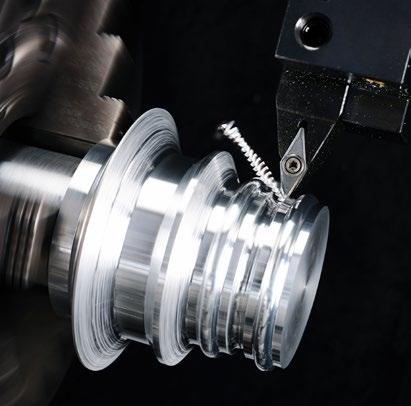

VBGT-AL insert finish profiling an N1 Aluminum cylindrical bar. The AL Geometry insert portfolio offers multiple grades and styles, improving product versatility
AL Geometry ISO turning insert is cost-effective, universal solution for medium to finish turning applications on aluminum and other non-ferrous materials.
WIDIA™ has added an AL Geometry to its ISO Turning portfolio, strengthening its broad offering of affordable tooling solutions for small to medium sized machine shops, machining aluminum and non-ferrous materials. The AL Geometry insert is offered in two grades for increased machining versatility: an uncoated microfine carbide WU10HT grade and the PVD AlTiN coated grade, WU05PT. Each grade is available in all popular styles, including C, D, R, T, and V inserts to increase customer tooling options.
In addition to enhanced product versatility from multiple grade and style offerings, the AL Geometry insert offers additional benefits. A highly polished rake face improves chip flow, resulting in shorter set up times due to less manual retrieval of chips following each cut. The periphery ground insert also features a sharper cutting edge to increase overall tooling precision and reduce cutting forces. Reliable tooling performances means customers can dedicate more time to machining and less time to post-machining deburring operations because of the reduction in built-up edge.
“The AL Geometry portfolio offers tooling versatility when machining different components and workpieces, while also providing more precise and reliable machining performance,” said Anil Kumar, WIDIA Global Turning Portfolio Manager. “By focusing on both tooling performance and value, we’re helping our customers maximize their return on our products.”
Versatile, reliable, and cost-effective – the AL Geometry is the universal solution for customers seeking lower cutting forces, extended tool life, and greater tooling productivity when machining a variety of non-ferrous workpiece materials, particularly aluminum. Orders for new AL inserts and other WIDIA metal cutting tooling can be placed through any WIDIA authorized distribution partner.
https://www.widia.com/

35 | Industry USA | December 2022 57 MORE INFORMATION METAL WORKING
BLOCK-BASED EDITOR: CREATE VISION APPS WITHOUT PROGRAMMING KNOWLEDGE
DS NXT: All-in-one system for AI-based image processing.


New IDS NXT software release themed “App your camera!”.
The current software release 2.6 for the AI vision system IDS NXT focuses primarily on simplifying app creation. The initial phase in development is often one of the greatest challenges in the realization of a project. With the help of the new Application Assistant in IDS NXT lighthouse, users configure a complete vision app under guidance in just a few steps, which they can then run directly on an IDS NXT camera. With the Block-based Editor, which is also new, users can configure their own program sequences with AI image processing functions, such as object recognition or classification, without any programming knowledge. Users create simple sequences in a few minutes with this visual code editor without having to know the syntax of a specific programming language.

With the Use Case Assistant, IDS supports users in creating Vision App projects. They simply select the use case that fits their project. With queries and tips, the assistant guides them through the process of creating the Vision App project and creates the code, just like in an interview. It links existing training projects with the vision app project or creates new training projects and data sets in IDS NXT lighthouse if required.
With the combinable blocks and the intuitive user interface of the Block-based Editor, anyone can realize their own projects using AI-based image processing (such as object detection or classification) as an individual vision app without having to know the syntax of a specific programming language. Using the predefined blocks of the code editor, users build their vision app graphically, including processes such as loops and conditional statements. How this works is demonstrated, for example, in the IDS Vision Channel (www.ids-vision-channel.tech). The session “Build AI vision apps without coding – xciting new easyness” is available for viewing as a recording.
IDS NXT is a comprehensive system with a wide range of workflows and tools for realizing your own AI vision
35 | Industry USA | December 2022 58 MORE INFORMATION OPTICS
applications. The intelligent IDS NXT cameras can process tasks “OnDevice” and deliver image processing results themselves. The tasks of the cameras are determined by apps that are uploaded to the cameras and executed there. Their functionality can thus be changed at any time. This is supported by software such as IDS NXT lighthouse, with which users can not only train neural networks, but now also create their own vision apps. The system offers both beginners and professionals enormous scope for designing AI vision apps.
www.ids-nxt.com


35 | Industry USA | December 2022 59 MORE INFORMATION
EMERSON’S NEW EMERGENCY SHUTDOWN


IMPROVES SAFETY, UPTIME IN HAZARDOUS APPLICATIONS

TopWorx DX Partial Stroke Test with HART 7 provides detailed valve assembly data and diagnostics, enabling predictive maintenance and reliable operation.
Emerson introduced the TopWorxTM DX PST with HART® 7. Units provide valuable valve data and diagnostic information, enabling the digital transformation of process applications. The new DX PST integrates seamlessly with existing valves and control systems, giving operators access to critical valve data, trends, and diagnostics that can be used to predict and schedule maintenance.
The DX PST’s partial stroke test ensures the system’s reliable function without shutting down the process. A safety feature that confirms the valve will fully close and stop the process if an emergency is detected, and the test is activated by simply pressing the local PST button—no additional equipment is required. To prevent critical failure in upset conditions, the unit will override testing to perform an emergency shutdown (ESD).
Certified for operation in harsh and hazardous applications, the adaptive DX PST is designed to ensure the integrity of valves, improving overall safety and facility uptime in oil and gas, refinery, chemical, industrial energy and mining applications.
“The digital transformation of the process industry continues to make operations safer and more productive,” said Prayag Vatsraj, Global Product Manager of Emerson’s Switchbox. “The DX PST with HART 7 supports digital transformation by providing reliable data that delivers valuable insight into the condition of valve assemblies that ensures the integrity of the system without shutting down the process.”
The HART® protocol, the specifications of which are owned by the FieldComm Group, builds another layer of information that ensures data, trends and diagnostics are
35 | Industry USA | December 2022 60 MORE INFORMATION HYDRAULICS AND PNEUMATICS
VALVE CONTROLLER
DISCRETE
monitored and tied into the Industrial Internet of Things. This information can be used to effectively predict and schedule maintenance.
Capable of Safety Integrity Level 3 (SIL 3), the DX PST is available with an integrated 2oo2 or 2oo3 solenoid valve redundancy when paired with ASCO™ Series Advanced Redundant Control System (ARCS) to further enhance safety and open terminals that allow an additional pressure transmitter along with two pressure switches. The discrete valve controller offers simple local and remote calibration.
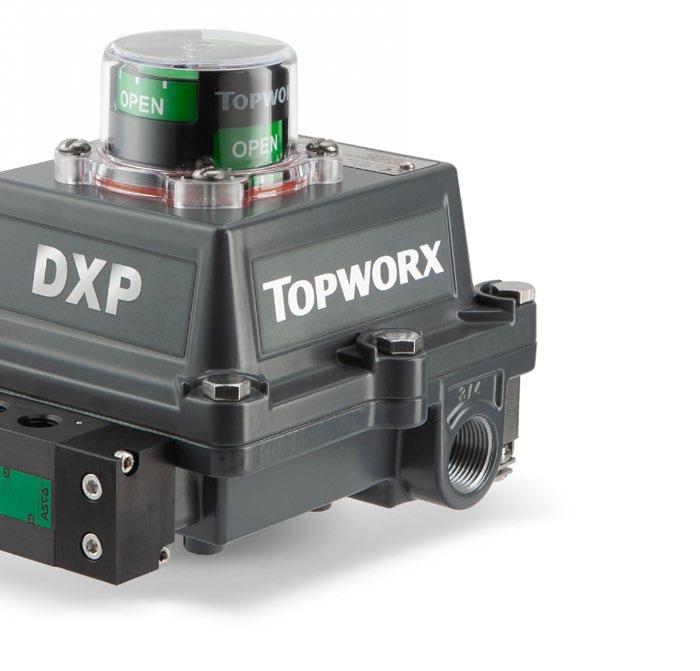
https://www.emerson.com/en-us/catalog/topworxtopworx-dxp

35 | Industry USA | December 2022 61 MORE INFORMATION
EMERSON INTRODUCES FIRST PNEUMATIC VALVE SYSTEM WITH INTEGRATED OPEN PLATFORM COMMUNICATIONS UNIFIED ARCHITECTURE

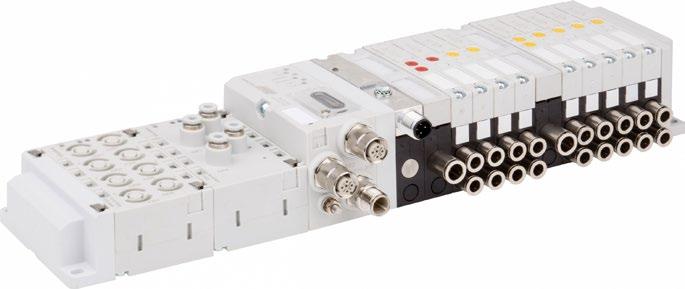
Emerson’s AVENTICS Series Advanced Valve Systems with OPC UA helps users solve interoperability challenges and access data more easily while the integration of the digital twin can improve productivity and efficiency.
AVENTICS Series Advanced Valve Systems with OPC UA is a digital twin solution that solves interoperability challenges while improving productivity and efficiency.
Emerson announced that itsAVENTICS™ Series Advanced Valve (AV) valve system with Advanced Electronic System (AES) Profinet and Ethernet/IP is now available with preinstalled Open Platform Communications Unified Architecture (OPC UA) functionality, making it the first and only valve system to offer this directly integrated capability. The AES helps users solve interoperability challenges and access data more easily while the integration of the digital twin can improve productivity and efficiency.
A valve system with integrated OPC UA functionality simplifies communication with upper systems since data and analytics are received via the valve system and communicated directly to upper systems, no gateway necessary unless deeper analysis or local dashboards are required. This can result in costs savings for users since it’s more complex and expensive to receive analytics from a valve system without OPC UA.
OPC UA functionality also expands the connected capabilities of the valve system itself, making it easier for users in industries such as automotive, food and beverage, packaging, pulp and paper industries and more to digitally transform. When organizations undergo digital transformation, key protocols such as OPC UA embedded in technologies enable device monitoring and machine connectivity when sending data from a valve system to an upper system. The AES is simple to integrate and connect
to new or existing applications and machines and provides easy access to data and analytics without changing the programmable logic controller (PLC).
“The AVENTICS Series AV System with OPC UA is a notable leap forward in the flexibility and integration of valve systems because it makes the transition to IIoT significantly simpler for engineers,” said Nils Beckmann, senior manager of product marketing, IIoT at Emerson. “With OPC UA, engineers don’t need to change a whole system or architecture to access valve data. They now have the flexibility to continue using their own cloud systems and software to gain easy access to data and analytics without disrupting or modifying the PLC.”
Developed by the OPC Foundation, OPC UA is a platform independent, information technology standard for sensorto-cloud data exchange that features integrated security.
https://www.emerson.com/en-us/automation/control-andsafety-systems/opc-ua

35 | Industry USA | December 2022 62 MORE INFORMATION HYDRAULICS AND PNEUMATICS
International capability
More than 80 employees in 35 different countries, ensuring a strong relationship with main local media. Mepax distinguishes itself through its extensive media knowledge and ability to select the best international online/print advertising options. PR can be translated into 35 languages.
Outstanding results
45,000 published articles in 2021: EMEA: 48% - Asia: 31% - Americas: 21%. Most of the articles are published in the top 1000 media worldwide.
Optimized process
With a proven process set for more than 200 active customers, we can adapt to all specific client needs with the highest reliability. We have developed in house the most advanced PR dedicated ERP, enabling transparency and real-time full online reporting. International media management is then made easy, fast, and efficient for optimal results.
www.mepax.com info@mepax.com

THE MOST
INNOVATIVE PR AGENCY
YOUR
OPTIMIZE
INTERNATIONAL PR AND ADVERTISING FOR THE INDUSTRIAL MARKET!























































































































